Read more here.
Science & Wellness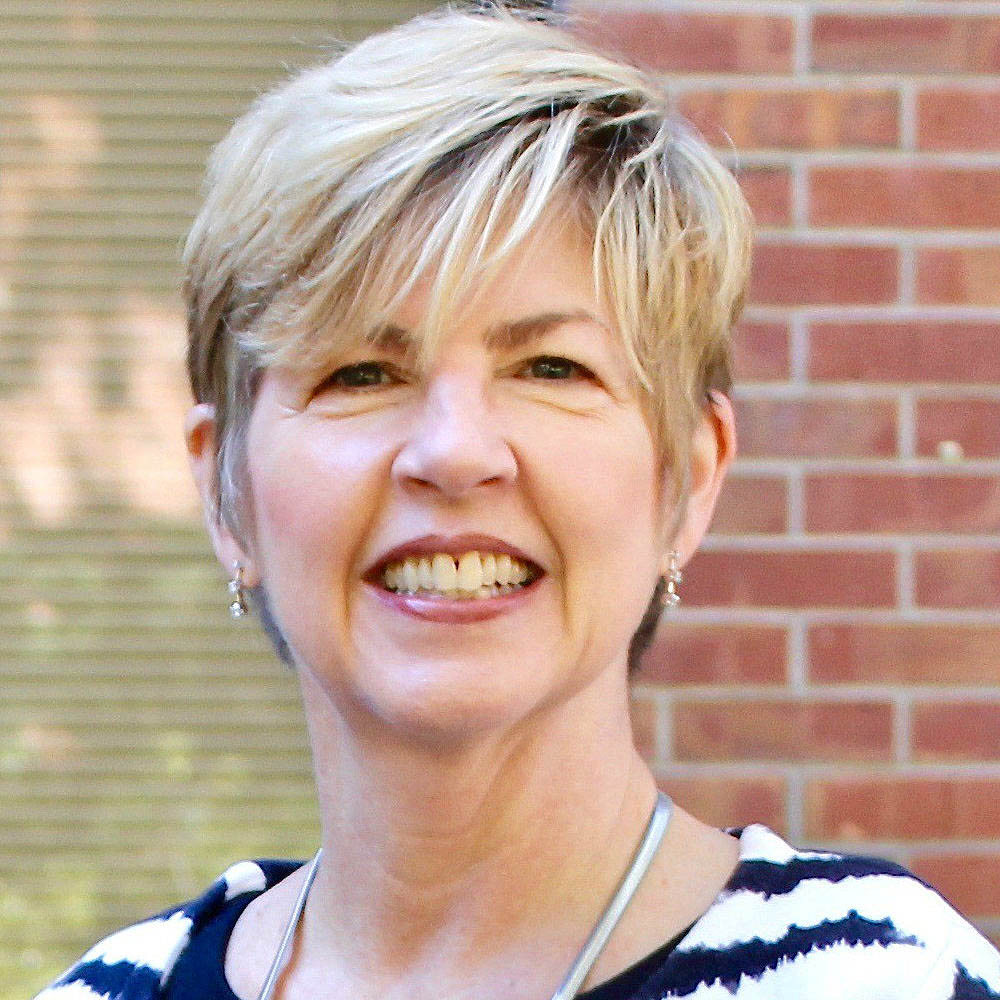
States unite to boost teaching of students with disabilities
December 1, 2017
Larry Lansford
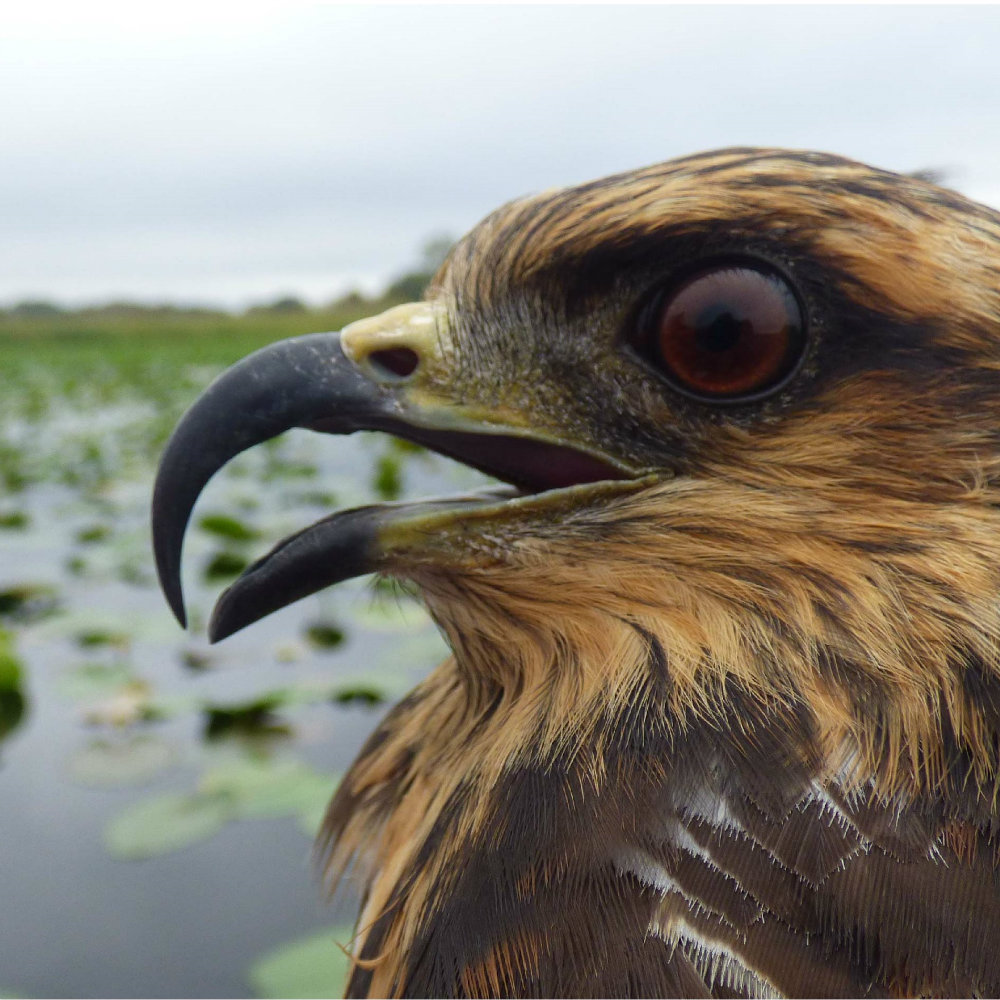
UF study: Bird evolves virtually overnight to keep up with invasive prey
December 1, 2017
Beverly James
GAINESVILLE, Fla. – The federally endangered bird, the snail kite, was faced with an interesting dilemma: The island apple snail was good to eat, but about two to five times bigger than the native snail that the bird usually consumed. What’s a hungry bird to do? Evolve – quickly.
A study by a team of University of Florida researchers has found that in about 10 years, the snail kite has evolved to develop a larger beak as its new prey, the island apple snail, proliferated and became invasive. The study is published in Nature Ecology & Evolution.
“Beak size had been increasing every year since the invasion of the snail from about 2007,” said Robert Fletcher, associate professor in the department of wildlife ecology and conservation, par of UF’s Institute of Food and Agricultural Sciences. “At first, we thought the birds were learning how to handle snails better or perhaps learning to forage on the smaller, younger individual snails. We needed to know if the birds had evolved or if they had just learned to handle the snails better.”
From approximately 2000 to 2007, the snail kite experienced major population declines, and there were mounting concerns that the bird was near extinction, Fletcher said. Nonetheless, over the next few years, the snail kite’s population started rebounding, he said.
“Monitoring data showed that juvenile kites were surviving their first year of life better, and that several aspects of reproduction were improving,” he said.
During their research, scientists discovered two factors to the bird’s survival. “The question we were most interested in was ‘are they evolving?’” Fletcher said. “We knew they had a hard time foraging on this larger food source. We observed the birds dropping the larger snails, so we wondered if natural selection was occurring and only the biggest birds could forage and survive.”
Researchers found that the birds with bigger bills were surviving, and their offspring were inheriting the bigger bills, which helps the bird dig into the snail’s shell for meat. But was this enough to account for the quick population increase?
“Only partially,” Fletcher said. “It’s complicated because we see natural selection, in that the birds who inherit bigger bills are surviving better. But, we also see that the birds are growing faster and developing bigger bills each year with this new, abundant prey.”
In addition, genetics play a big role, Fletcher said.
“We found that beak size had a large amount of genetic variance and that more variance happened post-invasion of the island apple snail. This indicates that genetic variations may spur rapid evolution under environmental change,” he said.
The implications are astounding, Fletcher said. In the past, scientists believed that larger animals could not respond or evolve quickly to invasive species, he said. “Now, we are waiting to see how this bird will continue to change,” Fletcher said.
The study has huge implications for Florida, which has more invasive species than any other state, Fletcher said.
“Land managers have to figure out how to recover endangered species without having to rely on an invasive species,” he said. “The invasives have such a negative impact on the ecosystem that you don’t want to rely on them to save an endangered species. So, there is a real conflict there.”
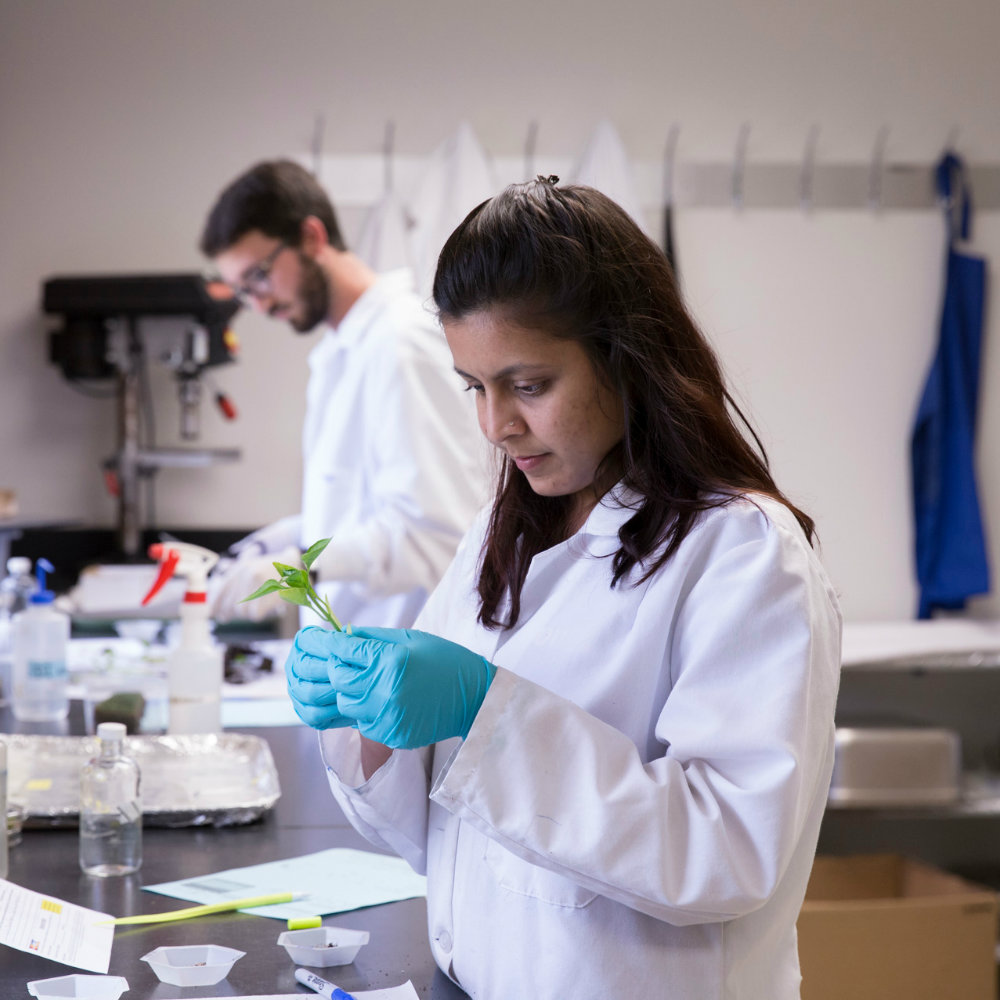
University of Florida climbs to 14th among public universities with $791 million in research expenditures
December 5, 2017
Joseph Kays
A new report from the National Science Foundation shows the University of Florida’s record $791 million in research expenditures in 2016 pushed it from 16th to 14th among public universities in a national ranking of R&D spending.
The statistics are compiled from NSF’s annual Higher Education Research and Development, or HERD, survey, which compiles research expenditure data from more than 600 higher education institutions in the United States.
Overall, the report shows that federal funding of higher education research and development increased for the first time in five years. When adjusted for inflation, federal funding increased by 1.4 percent between 2015 and 2016. UF’s $307 million in federal research expenditures in 2016 represented a nearly 7 percent increase from 2015.
Spending for research is a key indicator of the health of an institution’s research enterprise. Expenditures represent how much grant money the university actually spends in any given year. So, for example, a five-year, $10-million award might report expenditures of $2 million per year.
UF’s overall increase was bolstered by gains from its two largest federal funding agencies: the Department of Health and Human Services and the National Science Foundation. The university reported $161 million in HHS projects, up from $155 million in 2015, which pushed its rank from 23rd to 21st among public universities and from 45th to 43rd among all universities. With nearly $44.7 million in NSF funding, UF ranked 25th among publics, up from 26th in 2015.
Among all universities, public and private, UF placed 24th in 2016 compared with 25th in 2015. Other ranked institutions include the University of North Carolina, Chapel Hill at 11th, the Massachusetts Institute of Technology at 14th, Cornell University at 13th, the University of California, Berkeley at 26th, Washington University in St. Louis at 28th and Vanderbilt University at 31st.
Among other Florida State University System institutions, the University of South Florida in Tampa ranked 46th, Florida State University was 82nd and the University of Central Florida was 91st.
“This continued rise in the size and ranking of our research enterprise among our peers mirrors UF’s growing national stature,” said David Norton, UF’s vice president for research. “As would be expected of a top-10 public university, our faculty compete successfully against the nation’s finest scientists for funding to cure diseases, feed the world, probe the mysteries of the universe and understand the human spirit.”
Campus Life
Becoming visible - Michelle Barboza
December 10, 2017
Stephenie Livingston
The University of Florida's Florida Museum of Natural History celebrated 100 years of inspiring people to care about life on Earth in 2017. To mark the closing of an era and the beginning of a new century, UF News profiled three Florida Museum women who are shaping the research institution's future and breaking the cycle of stereotypes and misconceptions in the world of science. With modern tools like social media and podcasts, they continue the work of past and current museum women, who have fought for equality in their fields and for the visibility of women in science.
Science & Wellness
Black holes' magnetism surprisingly wimpy
December 7, 2017
Stephenie Livingston
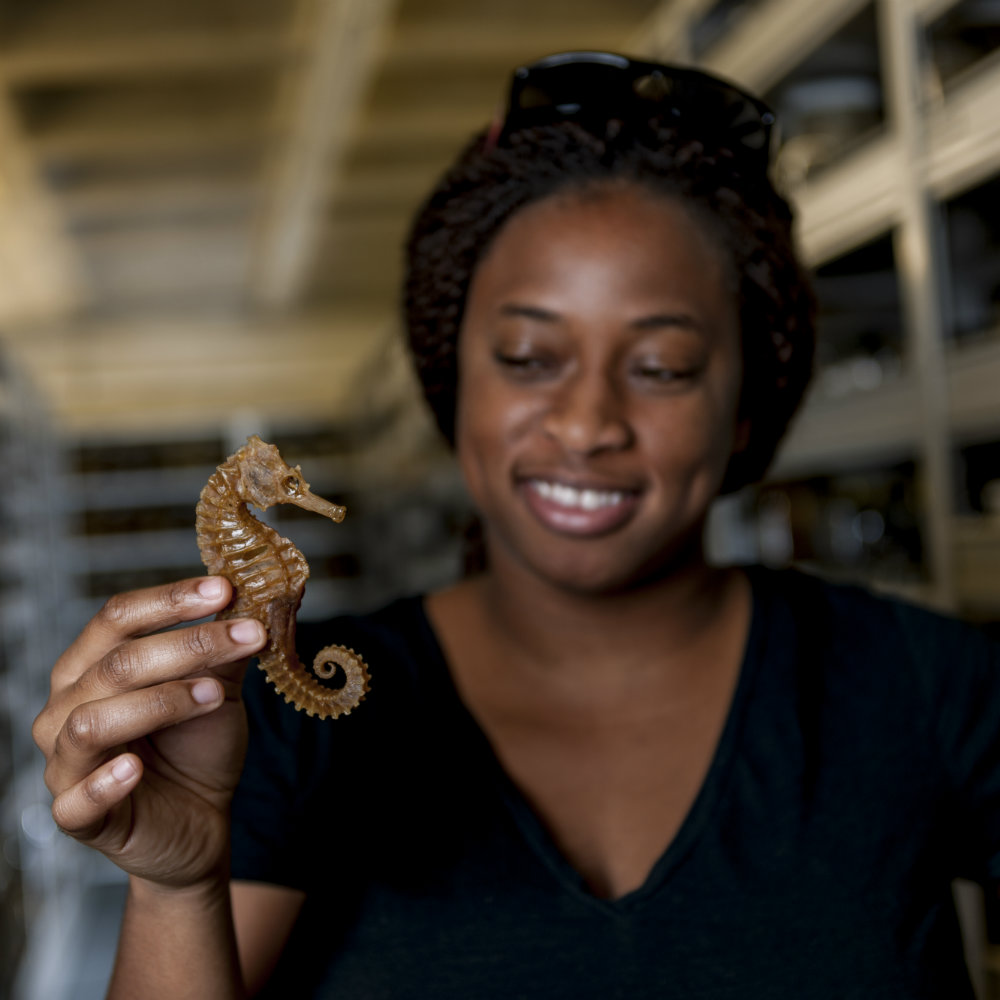
Becoming visible - Adania Flemming
December 11, 2017
Stephenie Livingston
The University of Florida's Florida Museum of Natural History celebrated 100 years of inspiring people to care about life on Earth in 2017. To mark the closing of an era and the beginning of a new century, UF News profiled three Florida Museum women who are shaping the research institution's future and breaking the cycle of stereotypes and misconceptions in the world of science. With modern tools like social media and podcasts, they continue the work of past and current museum women, who have fought for equality in their fields and for the visibility of women in science.
Science & Wellness
Certain books can increase infant learning during shared reading, study shows
December 11, 2017
Gigi Marino
Parents and pediatricians know that reading to infants is a good thing, but new research shows reading books that clearly name and label people and objects is even better.
That’s because doing so helps infants retain information and attend better.
“When parents label people or characters with names, infants learn quite a bit,” said Lisa Scott, a University of Florida psychology professor and co-author of the study published Dec. 8 in the journal Child Development. “Books with individual-level names may lead parents to talk to infants more, which is particularly important for the first year of life."
Scott and colleagues from the University of Massachusetts-Amherst studied infants in Scott’s Brain, Cognition, and Development Lab. Babies came into the lab twice: once at 6 months old and again at age 9 months. While in the lab, eye-tracking and electroencephalogram, or EEG, methods were used to measure attention and learning at both ages.
In between visits, parents were asked to read with their infants at home according to a schedule that included 10 minutes of parent-infant shared book reading every day for the first two weeks, every other day for the second two weeks and then continued to decrease until infants returned at 9 months. Twenty-three families were randomly assigned storybooks. One set contained individual-level names, and the other contained category-level labels. Both sets of books were identical except for the labeling. Each of the training books’ eight pages presented an individual image and a two-sentence story.
The individual-level books clearly identified and labeled all eight individuals, with names such as “Jamar,” “Boris,” “Anice,” and “Fiona.” The category-level books included two made-up labels ("hitchel," "wadgen") for all images. The control group included 11 additional 9-month-old infants who did not receive books.
The infants whose parents read the individual-level names spent more time focusing and attending the images, and their brain activity clearly differentiated the individual characters after book reading. This was not found at 6 months (before book reading), for the control group, or for the group of infants who were given books with category-level labels.
Scott has been studying how the specificity of labels affects infant learning and brain development since 2006. This longitudinal study is the third in a series. The eye tracking and EEG results are consistent with her other studies showing that name specificity improves cognition in infants.
“There are lots of recommendations about reading books to babies, but our work provides a scientific basis for these recommendations and suggests that the type of book is also important,” she said. "Shared reading is a good way to support development in the first year of life,” “It creates an enjoyable and comforting environment for both the parents and the infant and encourages parents to talk to their infants.”
The study was funded by the National Science Foundation.
Science & Wellness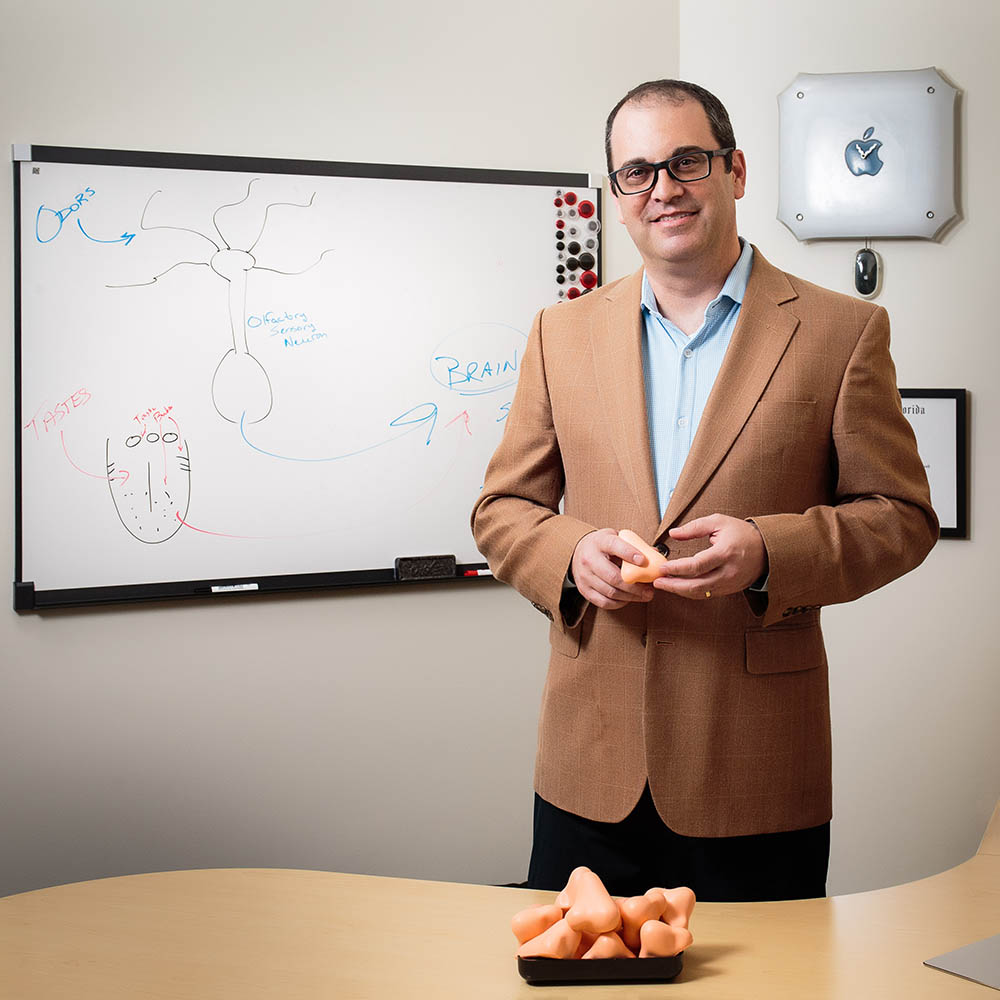
Scents and sensibility
December 20, 2017
Alisson Clark

For baby’s brain to benefit, read the right books at the right time
December 12, 2017
Lisa S. Scott
A UF psychology professor explains which features make a book a good choice for shared reading with babies based on her direct experience with infants in a laboratory setting.
For baby's brain to benefit, read the right books at the right time

Lisa S. Scott, University of Florida
Parents often receive books at pediatric checkups via programs like Reach Out and Read and hear from a variety of health professionals and educators that reading to their kids is critical for supporting development.
The pro-reading message is getting through to parents, who recognize that it’s an important habit. A summary report by Child Trends, for instance, suggests 55 percent of three- to five-year-old children were read to every day in 2007. According to the U.S. Department of Education, 83 percent of three- to five-year-old children were read to three or more times per week by a family member in 2012.
What this ever-present advice to read with infants doesn’t necessarily make clear, though, is that what’s on the pages may be just as important as the book-reading experience itself. Are all books created equal when it comes to early shared-book reading? Does it matter what you pick to read? And are the best books for babies different than the best books for toddlers?
In order to guide parents on how to create a high-quality book-reading experience for their infants, my psychology research lab has conducted a series of baby learning studies. One of our goals is to better understand the extent to which shared book reading is important for brain and behavioral development.
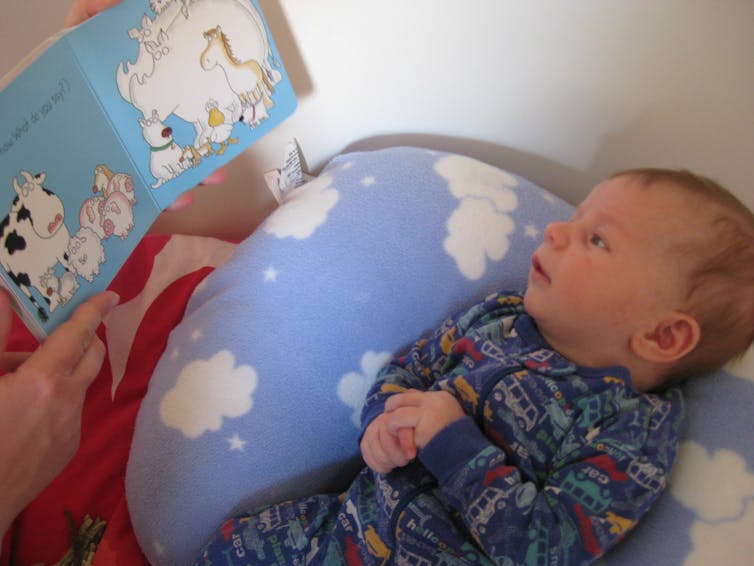
What’s on baby’s bookshelf
Researchers see clear benefits of shared book reading for child development. Shared book reading with young children is good for language and cognitive development, increasing vocabulary and pre-reading skills and honing conceptual development.
Shared book reading also likely enhances the quality of the parent-infant relationship by encouraging reciprocal interactions – the back-and-forth dance between parents and infants. Certainly not least of all, it gives infants and parents a consistent daily time to cuddle.
Recent research has found that both the quality and quantity of shared book reading in infancy predicted later childhood vocabulary, reading skills and name writing ability. In other words, the more books parents read, and the more time they’d spent reading, the greater the developmental benefits in their 4-year-old children.
This important finding is one of the first to measure the benefit of shared book reading starting early in infancy. But there’s still more to figure out about whether some books might naturally lead to higher-quality interactions and increased learning.
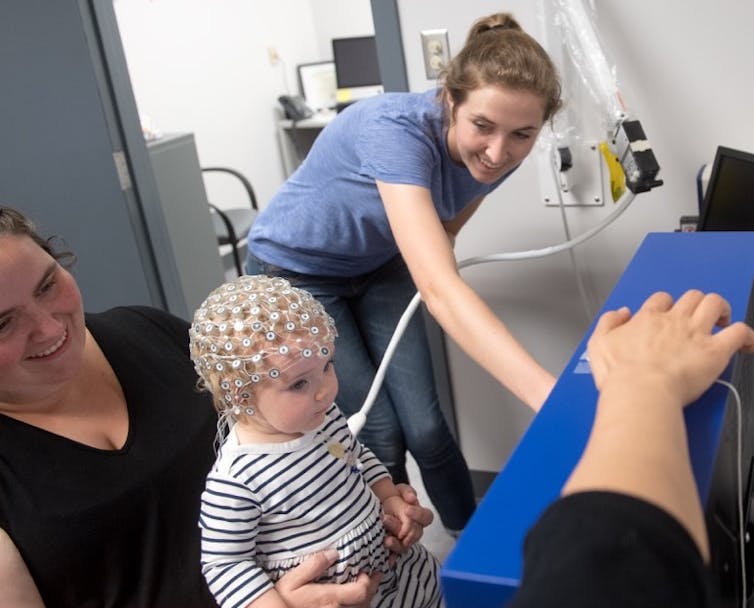
Babies and books in the lab
In our investigations, my colleagues and I followed infants across the second six months of life. We’ve found that when parents showed babies books with faces or objects that were individually named, they learn more, generalize what they learn to new situations and show more specialized brain responses. This is in contrast to books with no labels or books with the same generic label under each image in the book. Early learning in infancy was also associated with benefits four years later in childhood.
Our most recent addition to this series of studies was funded by the National Science Foundation and just published in the journal Child Development. Here’s what we did.
First, we brought six-month-old infants into our lab, where we could see how much attention they paid to story characters they’d never seen before. We used electroencephalography (EEG) to measure their brain responses. Infants wear a cap-like net of 128 sensors that let us record the electricity naturally emitted from the scalp as the brain works. We measured these neural responses while infants looked at and paid attention to pictures on a computer screen. These brain measurements can tell us about what infants know and whether they can tell the difference between the characters we show them.
We also tracked the infants’ gaze using eye-tracking technology to see what parts of the characters they focused on and how long they paid attention.
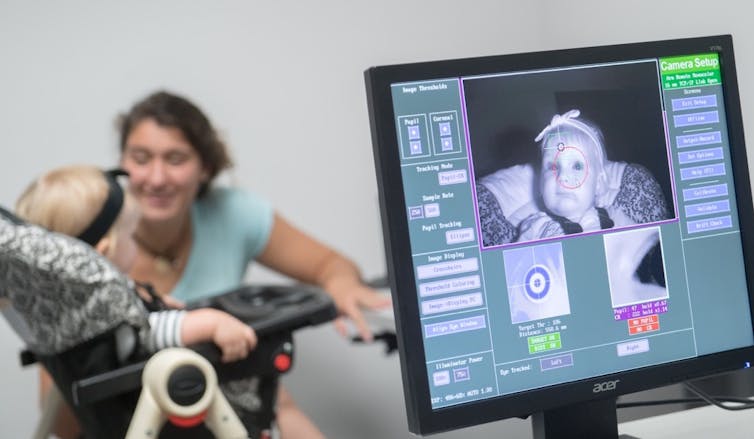
The data we collected at this first visit to our lab served as a baseline. We wanted to compare their initial measurements with future measurements we’d take, after we sent them home with storybooks featuring these same characters.
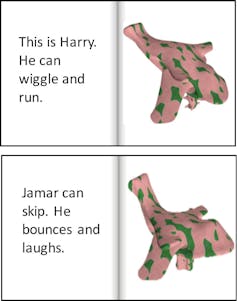
We divided up our volunteers into three groups. One group of parents read their infants storybooks that contained six individually named characters that they’d never seen before. Another group were given the same storybooks but instead of individually naming the characters, a generic and made-up label was used to refer to all the characters (such as “Hitchel”). Finally, we had a third comparison group of infants whose parents didn’t read them anything special for the study.
After three months passed, the families returned to our lab so we could again measure the infants’ attention to our storybook characters. It turned out that only those who received books with individually labeled characters showed enhanced attention compared to their earlier visit. And the brain activity of babies who learned individual labels also showed that they could distinguish between different individual characters. We didn’t see these effects for infants in the comparison group or for infants who received books with generic labels.
These findings suggest that very young infants are able to use labels to learn about the world around them and that shared book reading is an effective tool for supporting development in the first year of life.

Tailoring book picks for maximum effect
So what do our results from the lab mean for parents who want to maximize the benefits of storytime?
Not all books are created equal. The books that parents should read to six- and nine-month-olds will likely be different than those they read to two-year-olds, which will likely be different than those appropriate for four-year-olds who are getting ready to read on their own. In other words, to reap the benefits of shared book reading during infancy, we need to be reading our little ones the right books at the right time.
For infants, finding books that name different characters may lead to higher-quality shared book reading experiences and result in the learning and brain development benefits we find in our studies. All infants are unique, so parents should try to find books that interest their baby.
My own daughter loved the “Pat the Bunny” books, as well as stories about animals, like “Dear Zoo.” If names weren’t in the book, we simply made them up.
![]() It’s possible that books that include named characters simply increase the amount of parent talking. We know that talking to babies is important for their development. So parents of infants: Add shared book reading to your daily routines and name the characters in the books you read. Talk to your babies early and often to guide them through their amazing new world – and let storytime help.
It’s possible that books that include named characters simply increase the amount of parent talking. We know that talking to babies is important for their development. So parents of infants: Add shared book reading to your daily routines and name the characters in the books you read. Talk to your babies early and often to guide them through their amazing new world – and let storytime help.
Lisa S. Scott, Associate Professor in Psychology, University of Florida
This article was originally published on The Conversation. Read the original article.
Science & Wellness
5 ways the proposed PROSPER Act could impact students
December 12, 2017
Dennis A. Kramer II
A UF scholar in education policy looks at how the first comprehensive attempt since 2008 to reauthorize the Higher Education Act would change how student financial aid is doled out and how student loans are paid back.
5 ways the proposed PROSPER Act could impact students
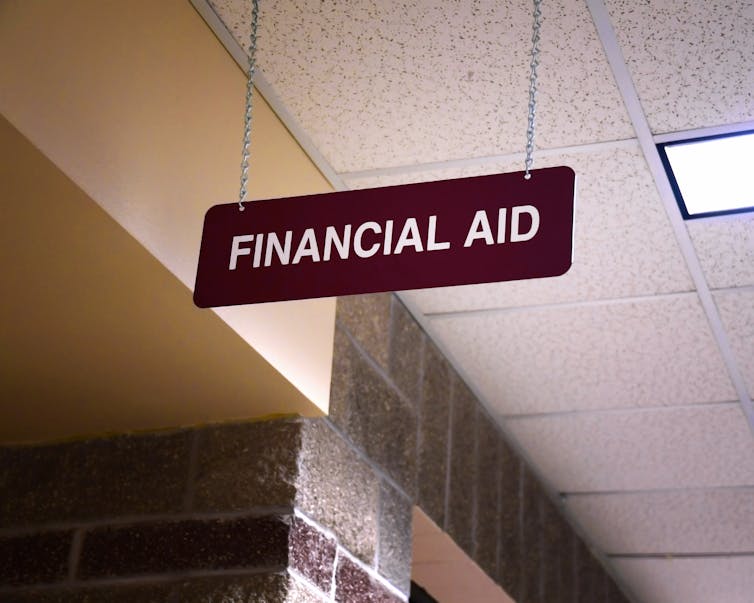
Dennis A. Kramer II, University of Florida and Christopher R. Marsicano, Vanderbilt University
For the first time in nearly a decade, the United States Congress is about to take up legislation to upgrade the Higher Education Act – the federal law that governs how the federal government supports and regulates higher education institutions.
The process began earlier this month, when U.S. Rep. Virginia Foxx, a Republican from North Carolina, chairperson of the House Committee on Education and the Workforce, introduced the Promoting Real Opportunity, Success, and Prosperity through Education Reform, or PROSPER Act. The PROSPER Act is the first comprehensive attempt since 2008 to reauthorize the Higher Education Act, which was first passed in 1965. The Senate version of higher education reauthorization is expected in early 2018.
Since the largest federal interaction with students is through the Federal Student Aid program, the vast majority of the recommendations within the PROSPER Act are related to changes in the student aid process. Scholars of higher education policy, like ourselves, have documented the role of federal policy in informing both campus operations and the ability for students to have access to, and ultimately succeed in, college.
Here are five things that stood out as we reviewed the proposed legislation.
#1. Pell Grant award won’t change but may come with a bonus
If you receive the Pell Grant, your award will remain the same. If you want more money, you will need to take 15 credits per semester. Currently students receive a prorated amount of the maximum Pell Grant depending on their enrollment level. The PROSPER Act continues the Pell Grant program through 2024 at the current maximum award of US$5,920. The legislation adds a $300 “kicker,” or bonus, to students who enroll in at least 15 credits per semester during the academic year. This in theory should encourage students to take more credits and graduate earlier. However, more credits could mean potentially higher tuition – perhaps more than the additional $300 bonus will cover – and, as a result, potentially more loans for low-income students. Providing an incentive for full-time enrollment is a good thing, in our opinion, but if it increases student debt levels, the negative impacts may outweigh the benefits.
#2. Larger loans for undergraduates, but limits for graduates and parents
Dependent undergraduate borrowers will see an increase in annual federal loan limits – from $5,500 to $7,500. What is unknown, however, is whether this access to larger loans will encourage schools to increase undergraduate tuition and fees.
Graduate students will see their loan limits set at $28,500, as opposed to the current limit, which is the total cost of attendance. For parents, the loan limit would be set at a flat rate of $12,500, as opposed to the current limit, which is the cost of attendance wherever their child attends college. For graduate students and parents, the proposed limits may increase the likelihood of taking out additional loans from a private lender – such as personal banks – to cover unmet need. Since private lenders typically have higher interest rates and less favorable terms, this shift may make it more difficult for student loan borrowers to repay their loans. Also, as more borrowers turn to private lenders, it would force borrowers to repay two separate entities – the federal government through direct loans and a private lending entity.
#3. Student aid will feel more like a job
PROSPER proposes additional investments in programs designed to increase connections between job-related skills and a college degree. For example, the legislation would increase available funds for undergraduates through the Federal Work Study program by phasing out graduate student eligibility. It also calls for the creation of an Apprenticeship Grants program focused on business-to-institution partnerships and provides access to Pell Grants for students who are pursuing short-term, certificate or vocational programs.
The PROSPER Act will also change the way aid is delivered to students. Instead of a single lump sum at the beginning of the semester, students will receive their aid – both grants and loans – in biweekly allotments, sort of like a paycheck. The idea is that biweekly distributions will ensure students have access to enough money to stay enrolled through the entire semester – which research has shown to be an effective strategy. Students, for instance, have reported that this approach “helped them to spend their money wisely, decrease work hours and focus on their studies.”
#4. Fewer loan repayment options will be available
Unlike the current six options to repay student loans, PROSPER would streamline repayment options to two. The first option would be a standard 10-year repayment. The second would be income-driven repayment, or IBR. Under the proposed reforms, the federal government will receive the same amount of money regardless of which plan is selected. It would be up to the students to select if they want to pay off their loans through the fixed 10-year period or pay 15 percent of their discretionary income for however long it takes to pay off the loan, plus interest. Gone are the days of loan forgiveness and forbearance.
#5. Going into public service will have fewer benefits
Public service careers will revert to being a more altruistic career choice. That’s because in prior years, students who went into public services jobs, or even specific K-12 teaching jobs, could receive loan forgiveness as part of their service to the public. However, the PROSPER Act proposes to eliminate all public service loan forgiveness programs and priority targeted grant programs. This includes the TEACH Grant programs, which give additional grant aid to undergraduates who get a bachelor’s degree in hard-to-staff teaching areas, such as special education, STEM and foreign language, and who pledge to work in schools that serve students from predominantly low-income families. While the evidence of effectiveness for public service loan forgiveness and targeted grant programs is inconclusive, these programs send powerful signals of national need and priority. It will be interesting to see if the end of public service loan forgiveness programs will change the supply of workers in public service jobs.
![]() While the proposed reforms within the PROSPER Act make large-scale changes to the federal student aid program, there are potential benefits for students. The simplification of the Free Application for Federal Student Aid, or FAFSA, along with access to a mobile FAFSA application, would reduce barriers to applying. Access to the additional work study aid and potentially larger Pell Grants may reduce the financial barriers for low-income student enrollment. Finally, allowing student loan borrowers to access income-based repayment may reduce financial stress. However, by removing key loan forgiveness programs and loan forbearance, this legislation is signaling to students that the cost of higher education will primarily be their responsibility long-term.
While the proposed reforms within the PROSPER Act make large-scale changes to the federal student aid program, there are potential benefits for students. The simplification of the Free Application for Federal Student Aid, or FAFSA, along with access to a mobile FAFSA application, would reduce barriers to applying. Access to the additional work study aid and potentially larger Pell Grants may reduce the financial barriers for low-income student enrollment. Finally, allowing student loan borrowers to access income-based repayment may reduce financial stress. However, by removing key loan forgiveness programs and loan forbearance, this legislation is signaling to students that the cost of higher education will primarily be their responsibility long-term.
Dennis A. Kramer II, Assistant Professor of Education Policy, University of Florida and Christopher R. Marsicano, Doctoral Candidate, Leadership and Policy Studies, Higher Education Concentration, Vanderbilt University
This article was originally published on The Conversation. Read the original article.
Society & Culture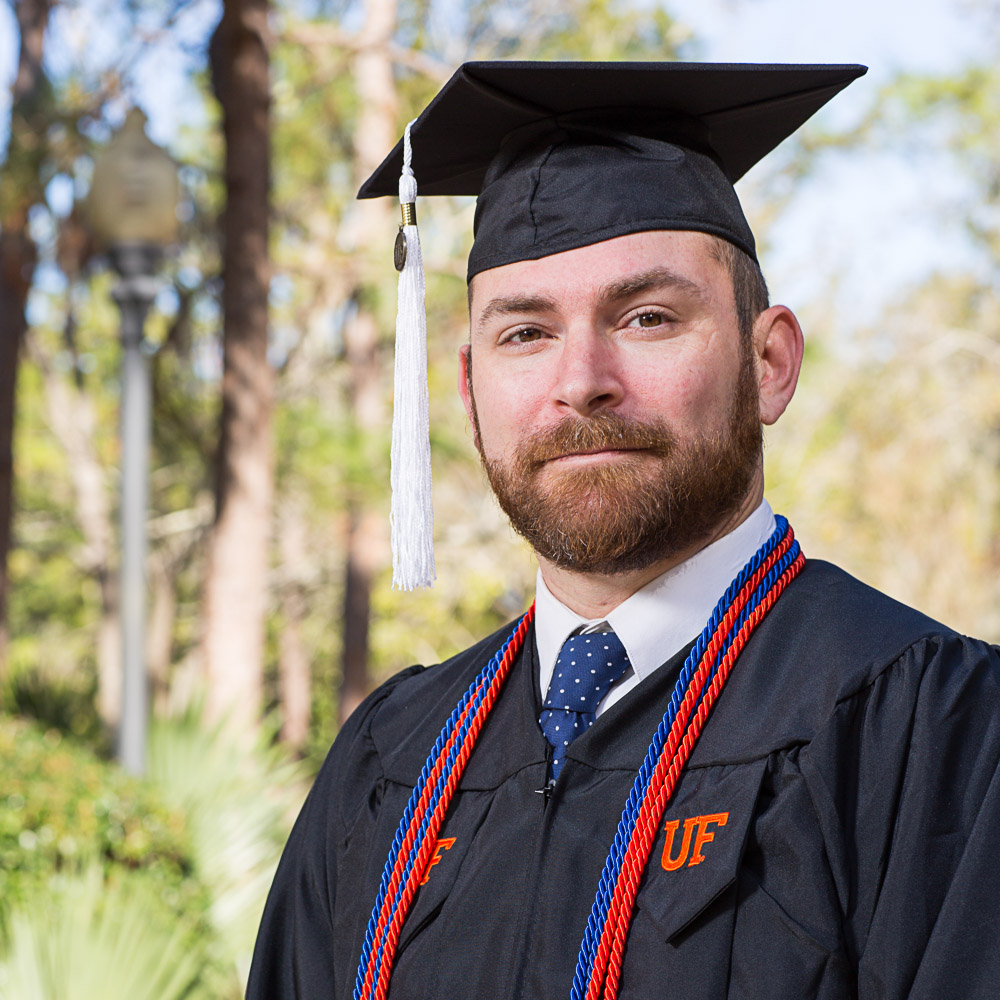
Graduating student now on the path to success
December 12, 2017
Margot Winick
After graduation, some students will go into internships and jobs, some will continue their education and some will face the unknown.
Among the 3,400 students who will graduate at UF Commencement ceremonies this week will be one who has faced the unknown and rebounded beautifully.
A couple of times, he was homeless.
Michael Hendricks, 38, graduating with a bachelor’s in political science from the College of Liberal Arts and Sciences, made a series of bad choices, he admits now, that left him flunked out of Boston University, abusing alcohol and living in his car or couch surfing at times when he had nowhere else to go. At one very dark point, he was suicidal.
In 2011, the Bradenton, Florida, native had noticed that people were living in tents as part of the Occupy Sarasota movement. One day, he got to talking to the people involved, and though he had never been a follower of politics, he decided to join them.
He was 90 days into his sobriety when he decided to travel to Washington, D.C. to participate in the Occupy Washington, D.C., march in early 2012. This experience opened his eyes to the power of joining together to make a statement, and hopefully, make a difference. “A purpose was starting to be given to me,” he says. “I got focus and a direction.”
In the course of this political involvement, he began to help with data entry, then organizers asked him to manage social media for the group. He also tried to start a social media business with the goal of utilizing technology to give citizens more of a say in the political process at the local, state, and national levels.
Continuing with his recovery program, and with a newfound drive to learn more about government, he enrolled in the State College of Florida and got a full-time job at the Porsche dealership in town using the Internet to find parts.
During this period, Hendricks also served as the panel chair for the host committee of an international conference for young people in recovery, which drew 3,500 people to Miami in September 2015. In July 2016, he helped host the state conference for young people in recovery in Sarasota as the registration chair for the host committee.
This commitment to learning about democracy, plus the personal satisfaction of working hard while also earning straight A’s, led him to apply to the University of Florida to study political science, providing that he first pass an online statistics course as a prerequisite. He passed, was admitted and, three weeks after the conference, moved to Gainesville in August 2016.
Today, Hendricks has just completed his third semester and will graduate with straight A's. He approached political science professor and elections expert Dan Smith to work on his senior thesis.
Entitled “Populism Trumps the Agenda,” Hendricks’ thesis examined the data of early voters and Election Day voters and the relationship of the medical marijuana amendment and support for candidate Donald Trump.
“Michael pushed me to work on the project with him,” Smith said. “He has a great eagerness to learn and came in to the project without preconceived notions or conclusions. He worked through the scholarly literature and empirical data to come up with some rather interesting findings.”
Using his data collection skills, Hendricks showed a relationship between ballot-level support and candidate support that was inconsistent for candidate and ballot measures. “These are new questions for scholars to chew on,” Smith said. “I look forward to see what he does next.”
Next is still unknown, at least for a few more weeks. Hendricks is applying to some of the top 30 universities offering Ph.D. programs in political science.
He hopes that his life demonstrates courage and kindness, and he’s open to sharing his experience if it might encourage and help even one person. In late November, he marked being sober for six years.
Many are inspired by his turnaround. Coming to see him graduate and celebrate his hard work and success will be family from North Carolina, Sarasota and friends he has met from many places along the way.
At the commencement ceremony, Hendricks will be honored with the Two-Year Outstanding Scholar award.
“I wake up every day and pray and make a commitment to do the next right thing, whatever that is,” Hendricks said. “Doing the next right thing is my motivation and keeps me from going to that dark place.”
Campus Life
Night-flyers or day-trippers? Study sheds light on when moths, butterflies are active
December 13, 2017
Natalie van Hoose
Butterflies fly during the day while moths travel at night – or so you might think. In reality, their behavior is much more complicated.
A new Florida Museum of Natural History study offers the first comprehensive overview of the surprisingly complex question of when butterflies and moths are active.
The research identifies outliers – night-flying butterflies and day-tripping moths – and pinpoints nearly 50 shifts from nocturnal to daytime behavior over the insects’ evolutionary history. It also suggests that the earliest ancestor of butterflies and moths flew during the day, not at night, as previously thought.
While little to nothing is known about when the vast majority of butterfly and moth species fly, eat and mate, the study provides a basic and much-needed framework by compiling existing data, said lead author Akito Kawahara, associate professor and curator at the museum’s McGuire Center for Lepidoptera and Biodiversity at the University of Florida.
“Even though butterflies and moths have been studied for centuries, there’s still a lot we don’t know about them,” he said. “We wanted to pull all the data together on when these insects are active to get a better picture of what’s happening. There are still major gaps in our knowledge, and many groups are understudied, especially in moths, but this lays a foundation for future studies.”
To gather all available data on when butterflies and moths are active, Kawahara and seven of his lab members rented an Airbnb house for the weekend, opened a shared Google document, divided up Lepidoptera lineages and started digging through two centuries’ worth of scientific literature. They added information from museum specimen labels and personal observations, categorizing butterflies and moths as day-flying, night-flying or twilight-flying.
They mapped these categories on the evolutionary tree of Lepidoptera, the order that includes butterflies and moths, and fed the data into a computer program. The team then used the program to predict when butterflies that lived millions of years ago were active.
The study predicts an estimated 75 to 85 percent of Lepidoptera are nocturnal, and about 15 to 25 percent are active during the day. Few species fly only during twilight hours.
Their findings are presented in a paper published in Organisms Diversity and Evolution.
Because the majority of Lepidoptera are active at night, scientists thought the common ancestor of butterflies and moths was nocturnal. But the computer program predicted the ancestor flew during the day, an unexpected finding based on the fact that the moth group most closely related to caddisflies, close relatives of butterflies and moths, is active during the day.
“That’s what the data seem to say,” Kawahara said. “The hypothesis was that Lepidoptera started shifting to day activity to avoid getting eaten by bats, but the answer may not be that simple.”
Although there are few physical characteristics that mark a species as day-flying or night-flying, the study identified several trends.
Colorful wings are usually linked with daytime activity while darker wings are generally associated with nighttime activity or daytime activity in darker areas.
“In the daytime, visual cues are used more,” Kawahara said. “Because there’s more light, the insects use the colors as a way of display.”
There is also a strong correlation between nighttime activity and the development of hearing organs, which Kawahara said may have originated as a defense mechanism against insect-eating bats.
While most moths are nocturnal and nearly all butterflies fly during the day, there are notable outliers.
Some day-flying moths, such as certain species of silk moths, have “big, flashy wings,” Kawahara said, while others, such as tiger moths and borer moths, mimic bees or wasps to ward off would-be predators. Others live at high altitudes or in colder areas or are active in autumn or winter and likely adapted to daytime activity because the temperatures at night were too cold for flying, he said.
The only group of butterflies known to be nocturnal, the Hedylidae, were long mistaken for moths because of their dull-colored wings and hearing organs, which most butterflies lack.
The study showed nearly 50 shifts from nocturnal to daytime activity, and there have likely been many more, Kawahara said.
“Some of these shifts may not have played out so well – I think there has probably been a lot of extinction,” he said. “But this shows how Lepidoptera are incredibly adaptable to all kinds of environments, whether it’s the top of a mountain, an Amazon rainforest or an island. This is why they’re able to switch between night and day and survive under those conditions.”
One of the team’s next projects is to use fossils to add time stamps to the Lepidoptera evolutionary tree. Knowing when butterflies and moths shifted from day activity to night, or vice versa, could help answer the main question that nags Kawahara.
“Why is this happening?” he said. “Is it competition, predation, mating? We just don’t know.”
He pointed out that the study’s dataset only represents about 500 of 160,000 described Lepidoptera species, and undescribed species of butterflies and moths could number between 500,000 to a million.
“We just don’t have those data yet,” he said. “We’re making inferences based on the little that we know.”
But you don’t have to be a scientist to help close the knowledge gaps, he said. By posting time-stamped photos of butterflies and moths on social media and tools such as iNaturalist, the public can provide scientists with much-needed information.
“Recording what you see in your yard or at your porch light at night is really valuable,” Kawahara said. “For the most part, we don’t have specific information about when certain insects are active, even from specimens in museum collections. These questions really can’t be answered without help from the public. It’s even more important to document insects as we see species disappearing.”
Study co-authors are David Plotkin, Chris Hamilton, Harlan Gough, Ryan St Laurent, Hannah Owens and Nicholas Homziak of the Florida Museum and Boise State University’s Jesse Barber.
The National Science Foundation funded the research.
Science & WellnessGulf Coast universities team up to address hurricane resilience
December 13, 2017
UF News
New multi-state institute focuses on reducing damage from severe storms
A new multi-institution research center that includes the University of Florida will focus on helping the Gulf Coast do better at preparing for and mitigating the damage and loss of lives from hurricanes and other severe storms.
The Hurricane Resilience Research Institute, or HuRRI, draws upon the strengths of its seven participating universities, from flood mitigation and hurricane modeling to public policy. Applications for the first round of research funding will be due in early 2018.
In addition to UF, the institute includes six other universities located in states spanning the Gulf of Mexico: University of Houston, Rice University, the University of Texas-Tyler, Texas Tech University, Louisiana State University and the University of Miami.
Amr Elnashai, vice president for research and technology transfer at UH, which will lead the institute, said the concept came together after hurricanes Harvey, Irma and Maria plowed through Texas, Florida and Puerto Rico, illustrating the need to look at severe storms and their aftermath in a different way.
“Much attention has been paid to understanding how hurricanes form and move, as well as coastal vulnerabilities,” Elnashai said. “But there has not been a systems view that accounts for the interactions and inter-connectivity of impact and resilience of all societal support functions, to manage assessment, impact, response and recovery as a continuum, thus protecting vulnerable communities.”
Chimay Anumba, dean of the UF College of Design, Construction and Planning, said UF brings key disciplines needed to address resilience to the problems posed by hurricanes.
“HuRRI provides an excellent vehicle for UF to collaborate with colleagues from our partner universities to minimize the impact of hurricanes and other extreme weather events,” Anumba said. “This builds on ongoing multidisciplinary research currently underway in our colleges.”
UF DCP faculty’s expertise in built environment resilience, adaptive planning and design, innovative construction, and sustainability will be deployed in the new institute. UF Herbert Wertheim College of Engineering faculty will provide state-of-the-art wind tunnel and destructive testing capabilities as well as its field reconnaissance program to study the effects of damaging winds.
Hanadi Rifai, John and Rebecca Moores Professor of civil and environmental engineering at UH, will serve as director. Her work includes an ongoing study of the chemical and microbiological contamination in Houston waterways after Harvey.
Each institution brings unique research capabilities – in engineering, science, policy, education and technology – and significant institutional support that will be supplemented with external grants and contracts and cooperative agreements to launch projects in hurricane resilience.
Rifai said the institute’s work will focus on “anticipating and accommodating” the storms’ impact, rather than the current model of waiting for a storm to pass and then devoting funding to repair and recovery. “It will take an enormous number of resources to influence a paradigm change and offer evergreen solutions for hurricane resilience for affected communities,” she said.
Researchers from the seven institutions will be eligible to apply for the initial round of internal funding, which will require collaboration with at least one faculty member from another member institution.
Campus Life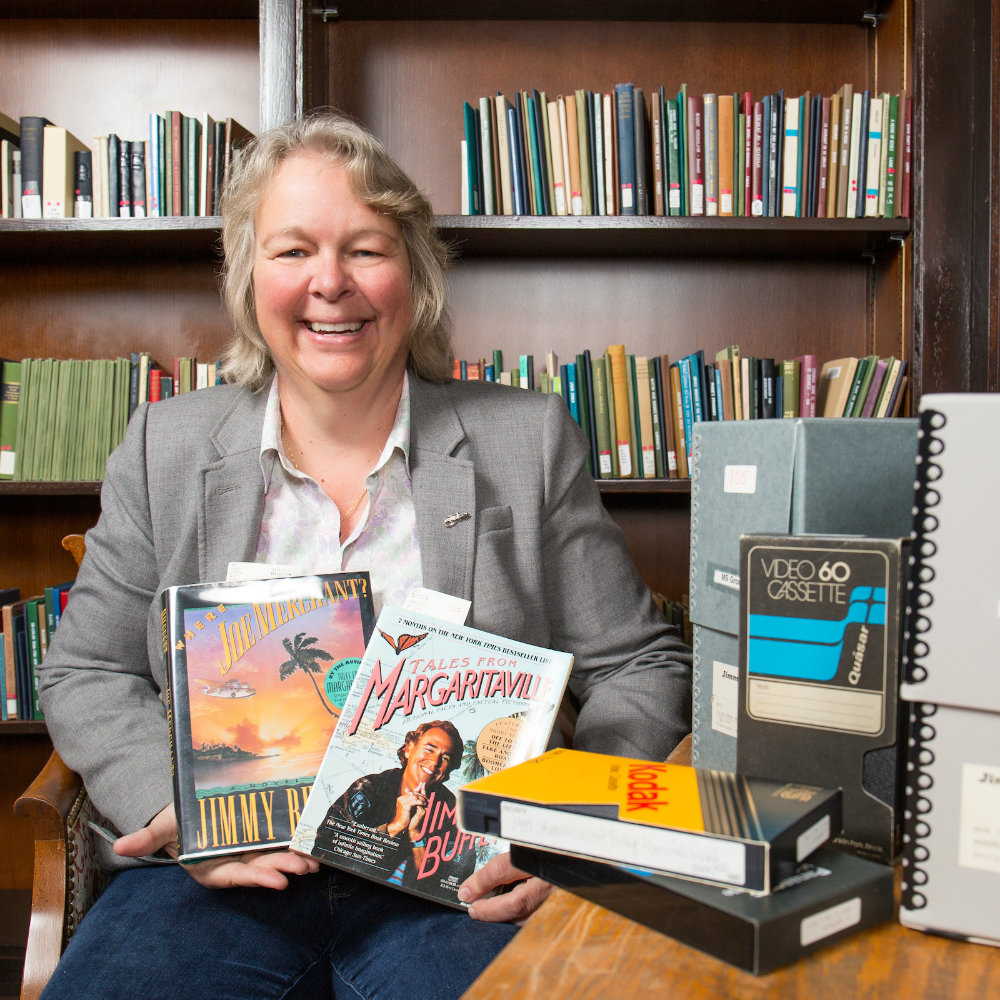
Parrothead paradise
December 13, 2017
UF News
Parrotheads likely already know that 2017 marked 40 years since the release of “Margaritaville,” the mega-hit that catapulted their beloved Jimmy Buffett to national fame and cemented his image as an easy-going, fun-loving beach bum.
What they may not know is that the University of Florida is home to a portion of the singer-songwriter’s papers, giving UF a piece of modern Floridiana courtesy of one of the Sunshine State’s most famous adopted sons.
Placed on deposit at UF’s Special and Area Studies Collections in Library East in 1993, the materials fill boxes that cover 5 linear feet of shelf space. They include manuscripts of two books, correspondence, videotapes and computer discs. The bulk of the papers, dated 1975 to 1993, are drafts and galleys of “Tales from Margaritaville,” a collection of short stories published in 1989, and the 1992 novel “Where is Joe Merchant?”
“UF would love to acquire more material and build a true Jimmy Buffett archive, not only for his fans, but for researchers of popular culture and Florida history,” said Flo Turcotte, literary collections archivist.
The collection also includes five non-professional videotapes of performances, a contract for a concert at the Euphoria Tavern in Portland, Oregon, a list of fiction and non-fiction books with Buffett's favorites indicated, thank-you letters for philanthropic activities, and a list of Jimmy Buffett scholarship recipients at the Cincinnati Public Schools.
On one particularly interesting videotape, Buffett is performing a Christmas concert in December 1990 at, of all places, Tallahassee Correctional Institution. The amateur video is grainy and sometimes out of focus, but it captures Buffett on a stage set up in what appears to be the prison baseball field. He and the inmates, flanked by guards, exchange banter (including some salty language) and are very clearly having a great time.
At one point, after performing “Changes in Latitudes, Changes in Attitudes,” the crowd is shouting call-outs for their favorite songs, and Buffett responds to one request: “I gotta tune this guitar to do that one,” then, with perfect comedic timing, “Are y’all goin’ anywhere? … I thought y’all had another show to go to.”
The audience roars with laughter.
“The Jimmy Buffett papers capture the essence of what every Parrothead knows: that Jimmy is more than just a singer of drinking songs and good times,” Turcotte said. “He is a cultural icon.”
Society & Culture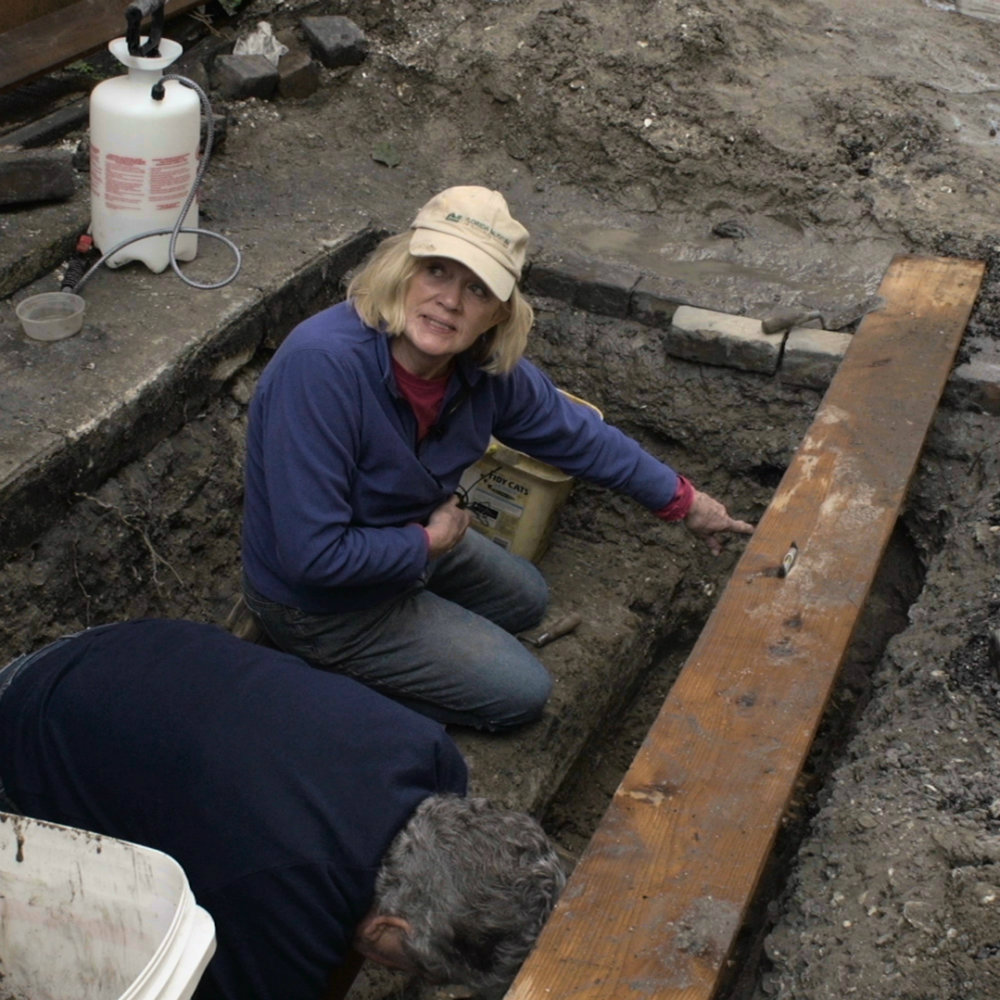
UF researchers highlighted in PBS documentary “Secrets of Spanish Florida”
December 15, 2017
Steve Orlando
Two-hour special airs Dec. 26 at 9 p.m. EST (check local listings). Streams Dec. 27 via pbs.org/secrets and PBS apps
A PBS documentary about Florida’s earliest settlers scheduled to premier later this month will feature a host of University of Florida researchers who helped uncover the real story of America’s Spanish colonists.
“Secrets of Spanish Florida – A Secrets of the Dead Special” airs Dec. 26 and is narrated by Jimmy Smits. It includes the story of St. Augustine, the first permanent European settlement in the United States, founded in 1565 -- two generations before the settlements in Jamestown and Plymouth -- not by English Protestants but by the Spanish and a melting pot of people they brought with them from Africa, Italy, Germany, Ireland and even converted Jews, who integrated almost immediately with the indigenous tribes.
UF has a long legacy of involvement in St. Augustine and in uncovering and preserving its history. In 2007, the Florida Legislature authorized UF to manage some three dozen historic properties there, and in 2010 UF Historic St. Augustine was formed to oversee and develop support for the properties.
UF researchers interviewed for the program include:
· Kathy Deegan, one of the nation’s leading Spanish colonial archaeologists, now retired from the Florida Museum of Natural History
· Michael Gannon, former distinguished service professor emeritus of history (The documentary is dedicated to Gannon, who died in April.)
· Eugene Lyon, adjunct professor of history
· Jack Davis, professor of history
· Jane Landers, Vanderbilt University history professor and project historian on the Florida Museum of Natural History’s Fort Mose Research Team
· James Cusick, curator of the P.K. Yonge Library of Florida History in the UF Smathers Libraries Special and Area Studies Collections
· Ghatu Subhash, mechanical engineering professor
Among the program’s highlights:
· With claim to the east coast of the New World contested by both the French and the Spanish, a community of settlers from Spain and elsewhere arrived in 1565 – before Jamestown and before Plymouth -- and laid claim to an area that is now St. Augustine.
· America’s original European forefathers were a melting pot of races that more closely resembled today’s population than was previously understood.
· The discovery of 1,000 pages of manuscripts written by members of the Timucuan tribe in the 16th century indicates that these people, who lived in Georgia and Florida, had achieved a level of literacy among indigenous peoples that has not been recognized before.
· Nearly 125 years before the Emancipation Proclamation—in 1738—a colony of 100 former slaves had already been given their freedom and their own land in Spanish La Florida.
· A “lost tribe” of indigenous people known as the Yamasees, survived extermination by hiding in the colony’s swamps and blending in with other tribes for generations, though their existence is still not recognized by the federal government. The documentary interviews two members of the tribe.
“Secrets of Spanish Florida – A Secrets of the Dead Special” is a production of Small Planet Pictures Inc., Investigative Media Group Inc. and 1186 Pictures in association with the University of Florida Historic St. Augustine Inc. and THIRTEEN Productions LLC.
Funding for the program was provided, in part, by The Lastinger Family Foundation; The Hough Family Foundation; The Weaver Family Foundation Fund, through the Community Foundation of Northeast Florida; and The Joy McCann Foundation. Funding for “Secrets of the Dead” is provided by the Corporation for Public Broadcasting and by public television viewers.
More information is available at http://www.pbs.org/wnet/secrets/secrets-spanish-florida-synopsis/3626/
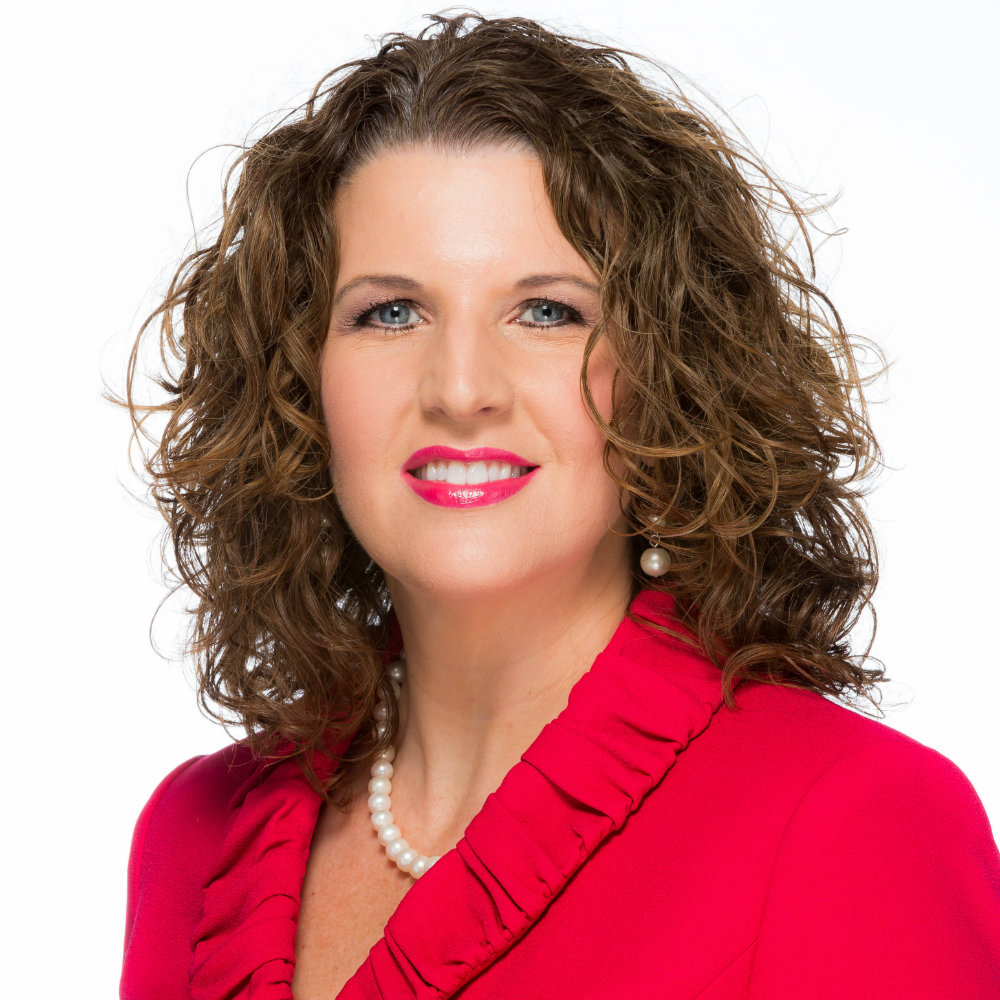
UF selects new Dean of Students
December 15, 2017
UF News
After a national search, the University of Florida announced Dr. Heather White has been selected as Associate Vice President for Student Affairs and Dean of Students, effective in January.
The Associate Vice President for Student Affairs and Dean of Students oversees the Dean of Students Office, the Counseling and Wellness Center and Multicultural and Diversity Affairs.
"Out of a robust and competitive applicant and finalist pool, Dr. White’s proven track record of innovation, leadership and excellence will help us serve today’s students and plan for tomorrow’s,” said Dr. David Parrott, vice president for Student Affairs.
Dr. White has spent the last six months serving as the interim Dean of Students. During this time, she led the department through extensive organizational and budgetary realignments. She worked with her team to successfully secure more than $600,000 of the Capital Improvement Trust Fund (CITF) allocation for the expansion of the Hitchcock Field and Fork Pantry and jumpstarted a restructuring of the university student medical withdrawal process to an online platform.
Prior to her role as interim Dean of Students, Dr. White led UF’s nationally recognized Career Resource Center for six years, pushing the department forward into innovative and groundbreaking models and programing to enhance career support. She has also worked in Housing and Residence Life and campus activities at Jacksonville University, Valdosta State University, and Mississippi State University.
Through the search process, the Division of Student Affairs brought four candidates to Gainesville for on-campus interviews. The finalists were strongly vetted through a review of stakeholder feedback, strengths/weaknesses provided by the search committee, and extensive reference checks with the candidates’ current and former employers/faculty members. All of this information informed the decision.
For the role of Associate Vice President for Student Affairs and Dean of Students, we sought an individual with strategic vision and leadership, strong communication skills, and a history of meaningful collaborations, among other attributes.
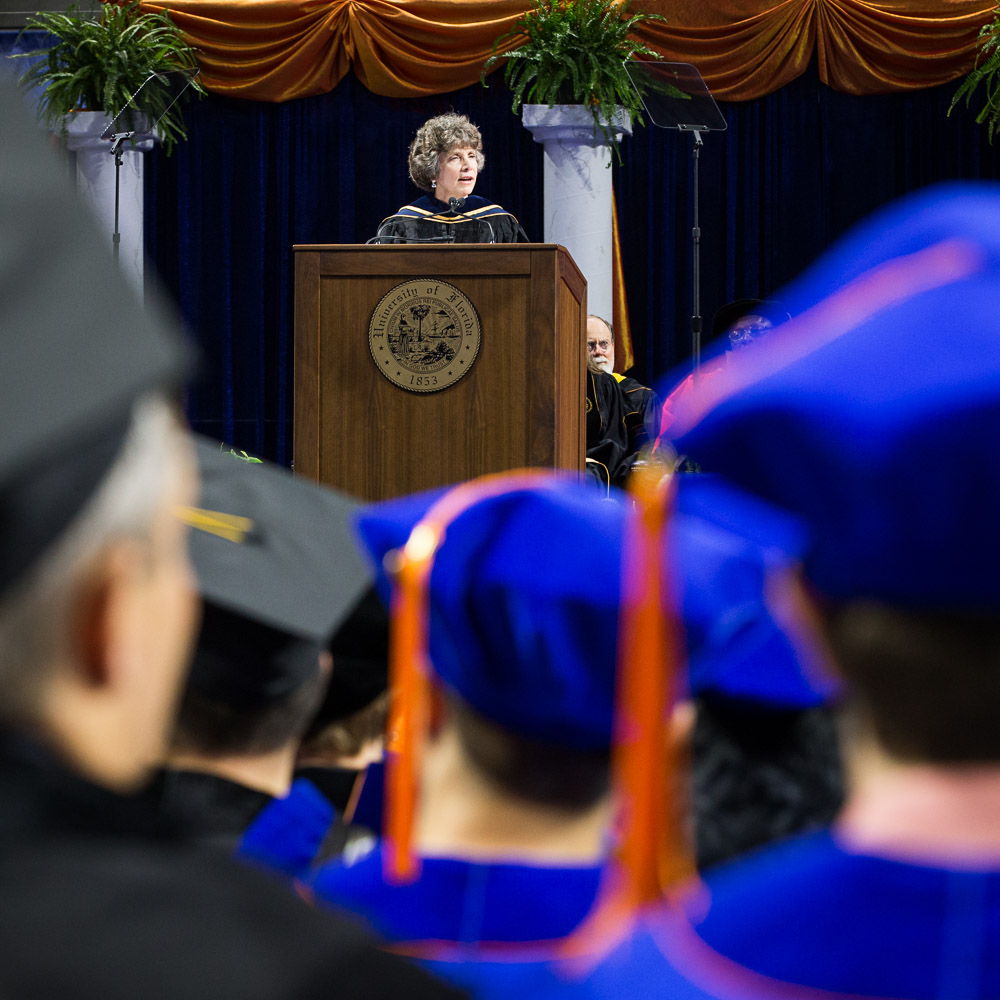
Nationally recognized speech/language scholar speaks at doctoral commencement
December 15, 2017
UF News
Susan Nittrouer has been a professor and chair of the department of speech, language, and hearing sciences in the College of Public Health and Health Professions at UF Health since 2015. Her research career, which focuses largely on questions regarding how children learn to recover language structure from the acoustic speech signal, spans more than 30 years. Her speech is below.
President Fuchs, esteemed faculty, family members, friends, and most of all, graduates. Thank you for this opportunity to be your commencement speaker. I’m thrilled to be here, but have to confess to having had some hesitation when the invitation was first issued. This is a big day for you. In a few moments, you’re going to walk across this stage and receive a doctoral diploma from one of the top ten public universities in the country. You deserve a speaker commensurate with the significance of that achievement. Someone like Bill Gates or Condoleezza Rice; Steve Spurrier, or that most famous of all commencement speakers – somewhat surprisingly – Amy Poehler. That’s the kind of speaker you should have, I thought.
But then I realized I could offer something most of those individuals could not: solidarity of experience. I have been exactly where you’re sitting now, and I got there the same way many of you probably did. Probably like you, my path to a doctorate was unplanned. I am quite certain that when 10-year-old me was asked what I wanted to do when I grew up, I did not respond by saying that I wanted to spend the majority of my waking hours in a windowless laboratory, poring over numbers, checking the calibration of my equipment, or rewriting that grant proposal one more time. Yet, with the advantage of hindsight, I realize that’s exactly how 10-year-old me would have responded, had I known what a rewarding career this would turn out to be.
You might say that my path to a doctorate started by volunteering here, at the William Penn Community Center in Levittown, Pennsylvania on Saturday afternoons when I was 12 years old. The Community Center offered activities to children with a variety of disabilities. While all these children were special, I was especially drawn to the quiet ones, the ones with communication disorders. The children who either could not easily understand others, or could not easily make themselves understood. They just seemed so – alone.
It wouldn’t be until years later, after I developed an interest in the life of Helen Keller that I would have that impression validated by learning that she herself had once said that of her two sensory impairments, deafness was the more debilitating because blindness separates us from things, but deafness separates us from people.
Over the years my interest in children with communication disorders grew, and my first job as an adult was teaching deaf children. Here are a couple of those children. Those things on their chests, by the way, are hearing aids. Even with the best intervention of the time, this is what they sounded like.
At this point I decided to make it the goal of my career to be helping design better interventions, so that all deaf children could learn spoken language, and communicate with everyone around them. So what had started as an interest in childhood blossomed into a passion in adulthood.
You probably have a similar story. If you’re getting a PhD in geology today, perhaps as a child you had a rock collection– maybe a secret rock collection you hid under your bed so your mother wouldn’t find it and scold you for bringing those dirty rocks into her clean house. Whatever your story, something that started as an interest grew into a passion, so here you sit.
Because of that shared experience I eventually decided I would be an appropriate commencement speaker. With that decision behind me, my next challenge was figuring out how to put together a commencement address. You see, I’ve never given one before. So faced with this challenge, I did what any good scientist would do: I googled it. Turns out there’s no shortage of advice on the internet for how to put together a commencement address. I perused a number of these sites and selected what I thought were the five best, assuming I could easily choose among them later. But then that task turned out to be more difficult than I anticipated, so I had to employ yet another tried-and-true scientific method. I closed my eyes and randomly picked one.
Now I had my online instruction manual, and committed myself entirely to following those instructions. Well, the site I picked recommends there are five cardinal rules for putting together a commencement address. I will now walk us all through those five rules, so that on this momentous occasion you will know that you have been the recipients of the perfect commencement address. Ready? Here we go. Cardinal Rule #1…..
Be funny. When I realized this was the first rule, I immediately had to question my selection methods. But being totally committed, I set about trying to find a way to follow this rule. After much thought, I finally concluded I was just going to have to nail the other four.
Cardinal Rule #2: Have a clear message. At this point I was close to panic. What is the just-right message for a commencement address? I didn’t know, so I went back to the internet, this time watching dozens of commencement addresses by other speakers, hoping to glean a common theme across them all. Turns out there are two common themes to these addresses. According to the first, I’m supposed to tell you how very special you are, having accomplished this achievement completely on your own. You’re one in a million. Well, actually, three in hundred. Three percent: that’s how many adults in the country have doctorates. According to the other theme, I’m supposed to tell you that now that you have this degree, you should follow your dreams, no matter where they may lead, no matter how esoteric or financially unproductive they may be.
The only problem is that the whole time I was watching these online addresses, one refrain kept running through my mind. It was: Congratulations, now get to work. And I believe there are two reasons this refrain kept popping into my head. First, yes, this is a wonderful accomplishment; no doubt about it. But the best decision you made really was in selecting the University of Florida at which to pursue your doctoral studies. Once here, you were guided and supported by the best minds in your field. The other reason is that now that you have this degree, we need you. Never before has our very civilization faced such serious and frankly existential threats. Granted, many of these threats are of our own making. For example – perhaps some of you will recall this bit of advice given to another graduate a half century ago.
Without question, the work in material sciences that led to the development of plastics has contributed to many great advances, such as disposable syringes, which have all but eliminated injection-related infections. And implantable devices, such as the cochlear implants that have helped so many of the deaf children I care about. But at the same time plastics have had unintended consequences.
This is Midway Island, right smack in the middle of the Pacific Ocean. 2000 miles from the nearest continent and home to the largest population of Albatrosses on the planet.
And this is what their home looks like now, because much of our discarded plastic washes up on the shores of Midway Island. This problem needs to be fixed.
Medical research has led to impressive declines in mortality rates for many forms of cancer. This is just one example.
Now we must develop equally as effective interventions for the sensory and cognitive impairments that so often accompany aging. This problem needs to be fixed. And I could go on and on and on, but you get the picture. There are lots of problems that need fixing. So, my message to you today can be nothing short of “You need to go out … .and save the world.” Now, you don’t need to save the whole world and you don’t need to save it in every way it needs saving. But you need to bite off a substantial chunk and you need to make a meaningful difference. And if that directive still seems too ostentatious and unattainable, let me show you something. Remember the goal I set for my own career, of wanting to help deaf children learn spoken language? Well watch this.
Of course I’m not going to tell you I’m responsible for that outcome. That outcome is the product of work by an army of scientists, engineers, otologists, audiologists, teachers of the deaf, and parents, all of whom shared a common vision for deaf children. And I’m not going to tell you that we’re at the end of our journey. Even the best performing deaf children still face barriers to communication. And our most significant challenge still lies ahead, because the kinds of intensive interventions required for this outcome remain unavailable to most children who are born deaf. But the point is, if you set your sights high and work hard, you’ll be surprised at what gets accomplished.
Cardinal Rule #3: Describe the future. This one I’ve got covered. Before long, you will be visited by an administrator; perhaps a department chair, maybe a director of research, maybe a post-doc supervisor. That administrator will sit down with you and say, “Now, about that grant proposal.” And you will hear that message often. You will begin to think that your job is trolling for dollars for your institution. But that is not your job. Your job is to save the world.
That same administrator will also tell you that within the next year, you’re expected to publish 3 papers as first or senior author in journals with impact factors of 4 or greater. That is not your job. Your job is to save the world. And that administrator knows that. But we all have to work under the same constraints. Saving the world is expensive. You’re going to have to help foot the bill. And no discovery, no matter how big matters, unless you share it with others, so you’re going to have to publish. But most importantly, there are a lot of people claiming to be able to save the world. So as imperfect and pedestrian as these measures are, we need a way a separate the true contenders from the imposters. You need to make sure you end up in that first bucket.
Cardinal Rule #4: Offer sage advice. When I read this rule, my first instinct was simply to tell you not to make the same mistakes I’ve made. But then I realized that would lead to my having to list all those mistakes, and that would keep us all here far longer than any of us cares to be. So, I decided to boil down everything I’ve learned from all my mistakes to three salient lessons.
First, persevere. You might think it would be easy to save the world; that you’d just have to announce you’re going to do so and everything would fall into place. But that’s not how it works. You’re going to encounter challenges. Some of those challenges will be exogenous, others will be endogenous. The exogenous challenges arise precisely because of those very pedestrian chores we all need to do: Not just writing grant proposals and publishing papers, but completing requisitions for equipment, and travel authorization forms, responding to the IRB or the IACUC. It’s easy to get discouraged, but don’t. It’s all just paperwork you need to complete for your journey.
The endogenous challenges are actually the more significant ones. Before long, you’re going to achieve some success. You’re going to get papers published, you’re going to be invited to give talks, and you’re going to get tenure. In short, you’ll become comfortable. That’s when it becomes easy to settle for getting half way to saving the world. But don’t. Just when you feel yourself getting comfortable, that’s when you need to dig down, push through, and set a new short-term objective for yourself.
Reflect. It’s often said that failure is part of success, and that’s true. Similarly, it’s said that when you fall down, you should get right back up and get right back in the race. Not so fast. When you fall down, stay down there a while; figure out why you stumbled. Yes, it will be true some of the time that the individuals who criticize your work really are incapable of understanding it. But more often than not, they’ll be perfectly reasonable colleagues who are in your corner and would like nothing more than to see you save the world, but think there are a couple flaws in your plan. Take the time to consider their criticisms, and adjust course as need be.
Inspire. You’re going to need some help to reach your goals. So inspire those around you who are capable of grasping and sharing your aspirations. Include people who are senior to you, because, although you are well prepared, questions will arise and they can help answer those questions. Include people who are junior to you because they have boundless energy and can continue your work when you’re gone.
Finally, we come to Cardinal Rule #5: Finish big.
In 1861 the first doctorate was awarded at Yale University. Since then, this degree has been conferred upon those individuals demonstrating the highest level of knowledge in their chosen field. Today you join their ranks; the 3 percent. But you – you in this room – you are the brightest and the best prepared doctoral recipients of your generation. And that will mean everything to your ability to achieve your goals. We expect you to set those goals high, and work hard to achieve them.
Yes, you will encounter obstacles along the way. But you’re equipped to deal with them.
And no, your life will not look like the lives of your friends from high school and college who chose different career paths. You will not go home every day at 5:00, and you will not head for the beach every weekend. Instead, your rewards will be doled out over longer time spans, in years or even decades. And they will not be so tangible. Your best rewards will not come in the form of bonuses or plaques that bear your name, but in other, almost imperceptible ways. Depending on your area, your best reward might come one day in the future when you realize that habitats for our wildlife are cleaner. Or when you see that more of our elderly are enjoying those extra years in their lives, because they’re free from sensory and cognitive impairments. My best rewards come when I hear deaf children talk about playing in their back yard.
So, today we celebrate the end of one long and hard journey for you. But more importantly, we find joy in helping to launch you on a new journey, one that promises to be long and hard, but oh so rewarding. I am quite certain that if a future version of you were here today, he or she would tell you “Thank you for choosing this career path.” For my part, after all these rules and lessons, the best I really can do is to tell you “Congratulations. Now get to work.”
Campus Life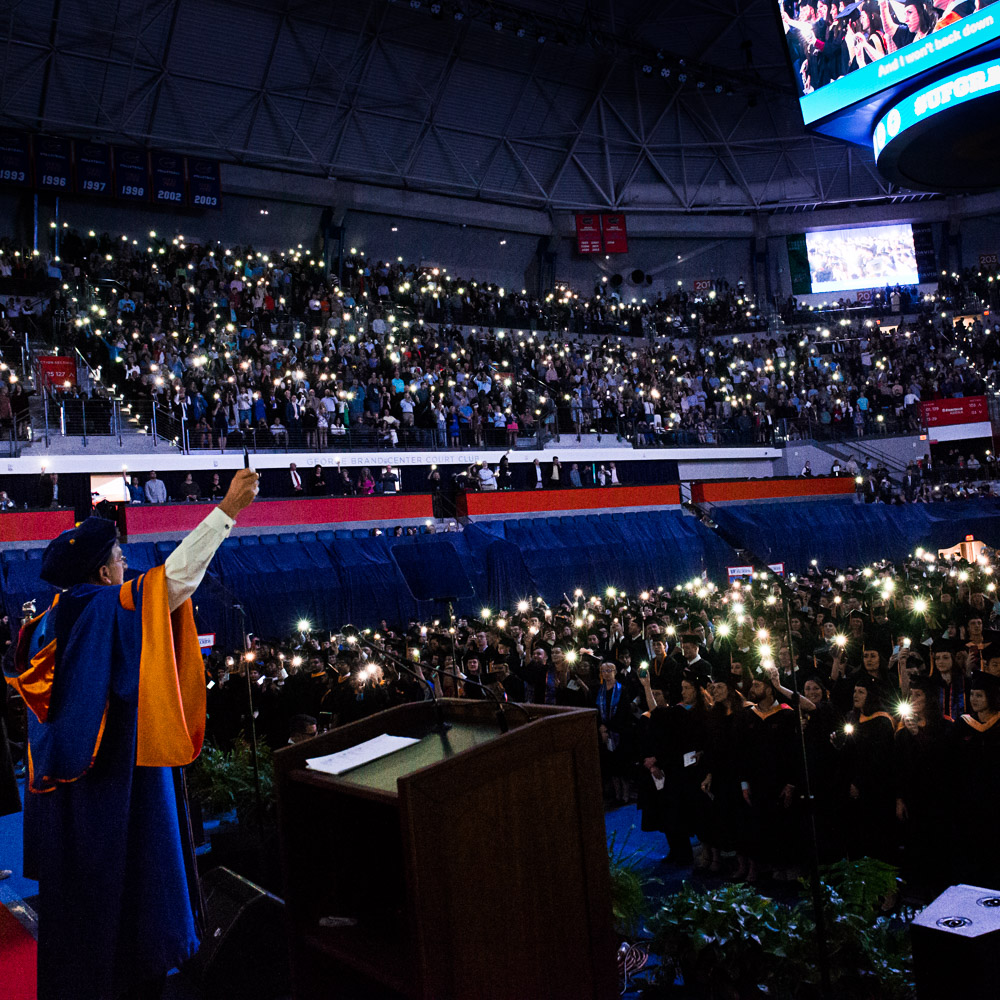
Live a Life of Daily Courage
December 16, 2017
UF News
UF President Kent Fuchs addressed graduates over the weekend during fall commencement ceremonies. His speech is below:
Members of the fall graduating class of 2017, you overcame a lot of obstacles to reach this day, and I don’t just mean the papers and projects or the final exams you completed this week.
You came through Hurricane Irma. You endured Richard Spencer. Many of us had a cold that seemed to last forever.
Together we even survived Pokemon Go … and the dab!
Irma was my first major hurricane, even though I graduated from Miami Killian Senior High in South Florida. Thousands of students and employees went days without power and had damage to their homes, as did many of the friends and families here today.
But what left the biggest impression on me was how people helped each other before, during and after the storm. They welcomed evacuees or refugees into their homes, shared meals with neighbors and joined each other with wheelbarrows and clippers to clean up.
White supremacist Richard Spencer followed Irma to Gainesville in October. Like Irma, no one at UF invited Spencer and his presence generated fear and harm to those his speech targeted.
His and his followers’ message of hate and racism was overcome in many powerful and courageous ways in our community.
Students from the Lubavitch Chabad Jewish Student Center were on the Plaza of the Americas the day of Spencer’s speech, proudly wearing t-shirts and yarmulkes identifying themselves as Jews. The President of the UF Black Student Union, Dwayne Fletcher, was a visible presence in the national media, refuting Spencer’s message. Messages of love, not hate, were posted or chalked everywhere and even flown in the sky! UF professor Laura Ellis played the anthem “Lift Every Voice and Sing” on the bells of Century Tower’s carillon.
I’ve also been awed by yet a third major event still unfolding across our country. This is the hashtag “MeToo” movement. It has been amazing to watch women bravely come forward to identify powerful men who have sexually harassed or assaulted them. Because of the courage of the first “MeToo” women, others have had the courage to follow, inspiring still others worldwide. Thanks to these courageous voices, we are experiencing a sea change benefiting women and also, men. Our society has declared that the sexual harassment that was tolerated in the past will no longer be accepted.
The women of hashtag “MeToo;” the opposition to Richard Spencer’s message of racism; the many Floridians who helped their neighbors and strangers during Hurricane Irma; all have been poignant and timely acts of courage.
Graduates, my call to action for you is that you live a life of daily courage.
There will be occasions, like the events of this fall, when you will be called on to very visibly make courageous decisions or take a courageous action.
However, most courage is unseen and unremarked.
For example it takes powerful courage to face financial or medical hardships. It takes courage to move forward when you are rejected numerous times as you seek a job. It takes real courage to love someone who is unlovable.
I would like to send you out into the world with faith in your own courage, since you will surely need it in your lives ahead.
To learn from these experiences of those who crossed this same stage before you, I sent an email to our alumni asking them to share stories of times in their life, after their studies at UF, when they were glad they had courage.
My email went out on Monday, Nov. 20 at 2:32 p.m. under the subject “Help with my commencement address – stories of Gator Courage.”
Five minutes later, I had more than 900 responses.
Those were from alumni courageously sending their “out of office” replies!
The first reply from a real person arrived 13 minutes after my email went out and messages continued to arrive for weeks.
I heard from recent grads, and grads of more than 50 years ago. I heard from veterans of Vietnam and the wars in the Middle East. I heard from lawyers, farmers, business people, citrus growers, doctors, moms and dads, a nun, and a man who said he was a reformed drug dealer.
Many thanked me for my email, saying they were glad to have the chance to think about courage. Since I don’t have time to tell you all of the incredible stories of courage I received, we have posted many online on the president’s website, president.ufl.edu.
It was particularly difficult to pick the stories to share today, but I landed on four.
The first is from a very recent graduate about her experience working in New York City. The second is about bravery and its surprising benefits. The third concerns the courage to love. And the fourth is about the courage to do the right thing.
Hailey Boerema graduated in advertising just two years ago. Many of her fellow students were women, and she anticipated the same in her professional landscape. But when she landed in the advertising industry in New York City, she said she “quickly discovered the title of ‘Mad Men’ … was very appropriate.”
As a sports fan, she wanted to work in sports advertising. Today she’s an art director at Grey New York and the only woman on the creative team assigned to the firm’s NFL and Gillette accounts.
Hailey is often one of the only women in meetings, pitches and brainstorm sessions filled with men.
She wrote, “Not only does it take courage to stand up in front of groups of people to pitch new advertising campaigns, but as a woman I have to stand extra tall and confident to be heard speaking on football and shaving.”
Graduates, in the coming days many of you will also feel outnumbered and self-conscious as you move to a new city or become the newest employee at a company. When that happens, I want you to think of Hailey gathering her courage, refusing to be intimated and pitching her ideas about football and shaving to rooms full of men.
Jack Hudock, a 1969 graduate, wrote that when he was a young lawyer he was part of the defense team for a man in jail on a charge of murder. Their client was a large and imposing man whose mental state was in question.
As Jack headed to the jail to meet with the man for the first time, he decided he had to win his trust. So when the guards brought the client into the interview room in shackles and chains, Jack told the guards to take off the shackles and chains.
He wrote, “In that moment I was as brave as I have ever been.”
The request surprised both the client and the guard in charge, who protested. But “after a spirited discussion” the guard unshackled and unchained the accused murderer and left.
It was OK. In fact, Jack and his client had a long conversation. Looking back, Jack says his bravery built a bridge.
Here’s a photo of Jack today. He wrote me, “There couldn’t have been effective communication between us if either of us were afraid or suspicious. I believe courage overcame those barriers.”
Graduates, it may happen next month or in ten years, but you will be called on to be brave. I know this not only from Jack, but also from the war veterans who wrote me, and from many others, such as one alumna who barely got out of revolutionary Iran alive with her kids. To a person, being brave helped them and those around them. When you hear that call to be brave, I want you to think of Jack, those veterans and other Gators who answered that call.
Joslyn Ahlgren wrote that she and her husband, Jeremy, have two children, an eight-year-old and a 19-year-old adopted son. The 19-year-old moved to his own home last summer, and they had no plans to adopt again. But in January they learned of two siblings, ages 9 and 14, who were in an emergency situation and needed a home quickly.
The urgency raised huge red flags for Joslyn. She and Jeremy knew nothing about Lauren and Nelson. How would bringing the two children into her home affect her 8-year-old, Sterling? Their house only has three bedrooms. This meant the siblings would have to room together, not ideal for their ages. There was also the impact on the family budget.
The Ahlgrens were full of angst, but in Joslyn’s words they “felt compelled” to move forward. Just one week after they learned of Lauren and Nelson, the two moved in.
Jeremy quit his job so that he could be a stay-at-home parent, a financial sacrifice. The adoption was finalized July 31st. Lauren and Nelson are now so comfortable at home that they’re telling stories about family events that happened before they moved in.
As Joslyn wrote me, “Courage has truly brought my family tremendous love and joy.”
I received many stories of acts of courage within families. One alumnus wrote me about how he fought a long court battle to adopt a child of a different race. Several alumni wrote about having the courage to care for parents or siblings with terminal illnesses – and then having the courage to be with them as they died.
I know we have graduates and family members and friends in the audience who are adopted or who have adopted children … who have cared for aging or DYING loved ones … who have taken into their family students or others needing help … who have shown the “courage to love” despite the cost to themselves.
I wish this courage for all of us. The courage to give, to care, to love. The courage to be there when someone needs you, and you’re not sure if you have the money, time or capacity.
My last story is from Lance Frankham, class of 1964.
Lance wrote me that early in his career he was a low-level manager who had a fantastic staff of men and women. Because of his staff, he got a great promotion that required moving to another state. He was allowed to choose a few of his people to accompany him, and his choices included a woman who was among the very best on his team.
Remember, this was the 1960s! When his managers learned about his plans, he was summoned to the main office and told the company did not move women.
Lance didn’t want to hurt his reputation with the company, his big promotion or his career in the engineering and construction fields. But he also wanted to do right by his employee. He told his bosses: “This is one female we are going to move.”
Due to Lance’s courageous insistence, the company agreed. The woman moved and went on to a long and successful career. But the best part may be what happened later. Because of Lance and his employee, other women in the company followed in her footsteps.
Lance said the company eventually “made drastic changes and went on to embrace the concept of equal opportunities for all employees.”
Just like Jack Hudock wrote, courage breaks down barriers. Just like the Ahlgrens experienced, courage brings love to families. Just like we’ve seen with the women of “MeToo,” having courage helps others have courage. We think courage is about ourselves. No. It’s about others. In fact, it is about all of us.
You’ve heard stories about the courage to not be intimidated when you are in a new place or are sorely outnumbered, the courage to be brave, the courage to love and the courage to do the right thing. These are just four of many types of courage I heard about from UF alumni.
Others shared stories about the courage to leave their jobs and start a new business, the courage to celebrate their personal faith and the courage to live productive and happy lives despite life-threatening illnesses or being the victims of abuse or violence.
Most important, you heard about the courage of living our daily lives, of loving others and sacrificing to make the world a little better.
Courage brings clarity. As Florida’s own Zora Neale Hurston once wrote, “Lying is dodging. Truth is a letter from courage.”
And so graduates, I hope you not only feel inspired by these alumni, but carry their courage with you in your heart. Proclaim your best values through striving to live your lives courageously in your most everyday hours and your once-in-a-lifetime moments.
The musician Tom Petty was born and raised here in Gainesville. We lost Tom Petty to cardiac arrest on Monday, October 2nd. That Saturday, October 7, a new tradition was born here at UF in the Swamp.
Between the third and fourth quarter of the football game, the strains of the classic Petty song “I Won’t Back Down” began to play. The thousands of Gator fans in the Swamp responded by standing and singing Petty’s words of courage and millions of fans watched on social media.
“Well, I won't back down
No, I won't back down
You can stand me up at the gates of hell
But I won't back down”
I invite all of you to join with me in standing …
Turning on the lights on your smart phones …
And singing with me Tom Petty’s words of daily courage.
(Everyone sings “I Won’t Back Down.”)
Graduates, congratulations! It is great to be a Florida Gator. It is great to be a courageous Gator!
Campus Life
UF a top performer nationally for Latino graduation rates
December 18, 2017
UF News
The University of Florida is a top-performing institution nationwide for graduation rates for Latino students, according to a new report from The Education Trust.
The report, released Thursday, shows UF ranks among the top-10 best schools and has the highest graduation rate for Latino students among the top 10 at 87.3 percent, compared with an 88.2 percent graduation rate for white students for a 0.8 percent graduation gap.
The graduation rate is a three-year weighted average for 2013, 2014 and 2015.
Overall, the report found, the past decade has seen tremendous growth in Latino student enrollment and completion, but only 53.6 percent of Latino students who start college as first-time, full-time freshmen earn a bachelor’s degree within six years — a rate that is nearly 10 percentage points below that of their white peers.
Five of the top 10 schools are in California. The sample of 613 institutions includes 344 public institutions and 269 nonprofit private institutions.
The University of South Florida also made the top-performers list. Its graduation rate for Latino students – 66.2 percent – was slightly higher than the rate for white students of 65.6 percent.
“Our findings make clear that colleges and universities have a lot of work to do if they want to fulfill their public purpose to serve as engines of social mobility for all students, including Latino students,” said Wil Del Pilar, vice president of higher education policy and practice at The Education Trust. “As members of Congress contemplate changes to the Higher Education Act, they need to take a close look at what successful colleges are doing and provide resources, support, and a system of accountability to help lower-performing colleges get dramatically better at serving low-income students and students of color.”
The Education Trust is a nonprofit advocacy organization that promotes high academic achievement for all students at all levels, pre-kindergarten through college. Its goal is to close the gaps in opportunity and achievement that consign far too many young people — especially those from low-income families or who are Black, Latino or American Indian — to lives on the margins of the American mainstream.
Campus Life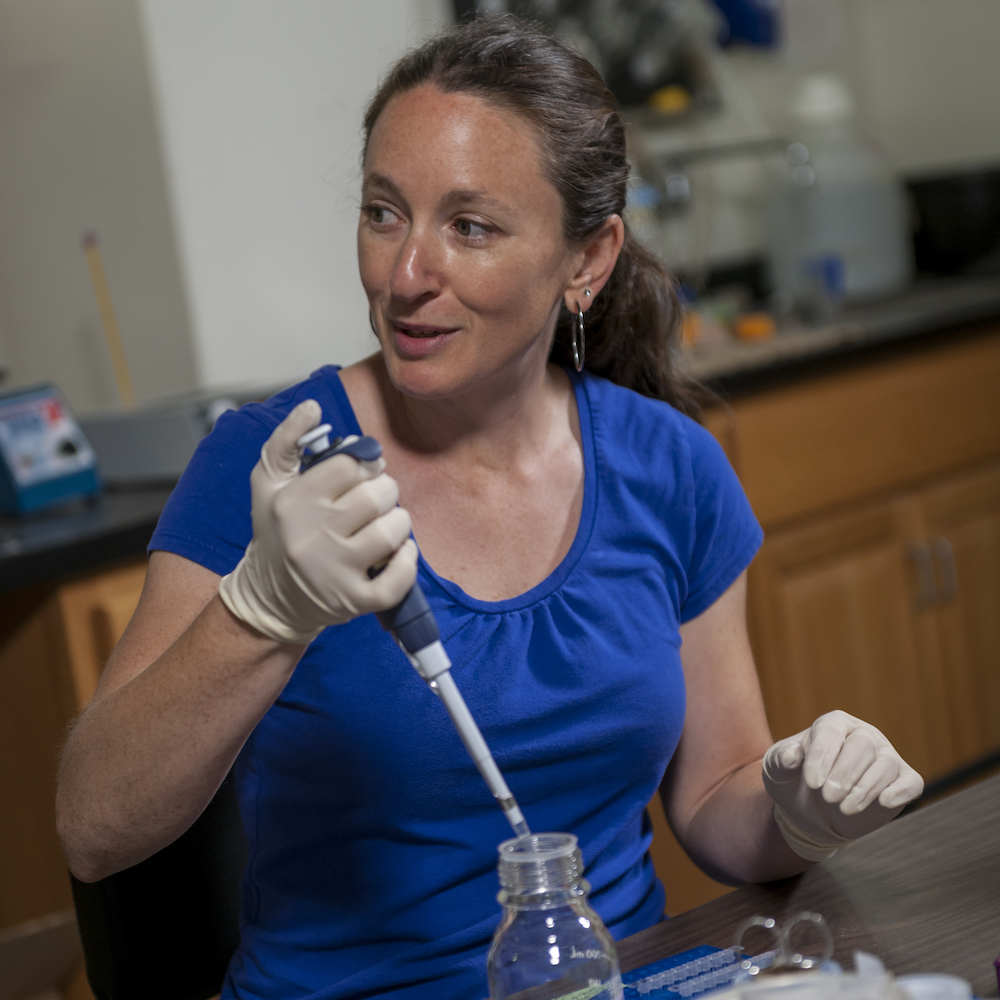
Becoming visible - Verity Mathis
December 18, 2017
Stephenie Livingston
The University of Florida's Florida Museum of Natural History celebrated 100 years of inspiring people to care about life on Earth in 2017. To mark the closing of an era and the beginning of a new century, UF News profiled three Florida Museum women who are shaping the research institution's future and breaking the cycle of stereotypes and misconceptions in the world of science. With modern tools like social media and podcasts, they continue the work of past and current museum women, who have fought for equality in their fields and for the visibility of women in science.
Science & Wellness
Black voters won Alabama for the Dems; here’s what they want in return
December 18, 2017
Sharon Austin
UF’s director of African-American studies comments on the aftermath of the stunning election in Alabama and offers some words of wisdom for Democratic senator-elect Doug Jones.
As a scholar of African-American and Southern politics for the last 25 years, I’ve witnessed a lot of election upsets and surprises. None has been more interesting than the Democrat Doug Jones’ election to the U.S. Senate in a Dec. 12 special election against Republican Roy Moore.
I’m not talking here about the controversy surrounding Moore’s sexual history. No, for me this race was fascinating because America now has black voters to thank for helping Alabama send a Democratic senator to Washington for the first time in 25 years.
According to exit polls, 30 percent of the over 1 million people who participated in this election were black, and 96 percent of black voters supported Jones. In short, in an election where Jones’ margin of victory was less than 2 percent, Alabama’s near-unanimous black voters were the deciding factor.
Now that black Alabamians have accomplished their goal of electing their preferred representative, the big question is: What will they get in return?
Voter concerns
Black voters in the South, especially black female voters, are historically the most loyal supporters of the Democratic Party and Democratic candidates. They are a force powerful enough to sway the outcomes of elections in red states.
Having done so, black voters may reasonably expect Democrats to thank them by actually tackling the issues that disproportionately affect their communities.
Poverty is probably top on that list of concerns. Alabama is the sixth poorest state in the nation, with a poverty rate of 18.5 percent. In some counties more than 40 percent of people live in poverty. Alabama’s rural areas have been said to show “the worst poverty in the developed world.”
Most of those areas are in the state’s so-called “Black Belt.” In Wilcox County, for example, the white poverty rate is 8.8 percent, but the black poverty rate is 50.2 percent. Nearby Lowndes County has the lowest white poverty rate in the state – 4.1 percent – but almost 35 percent of black people there live in poverty.
Other Black Belt counties show similar wealth disparities, with black households three to four times more likely to live in poverty than their white neighbors. Democrats have talked a lot about poor whites since the 2016 election. It’s useful to remember that black people, particularly in the rural South, still face stunningly high rates of economic exclusion.
Entrenched poverty means that health care access for black Alabamians is also dismal. The Black Belt region has fewer primary care physicians, dentists, mental health providers, and hospitals than other parts of the state. It has a much higher rate of uninsured people than other regions. In most of its counties, more than 25 percent of residents lack access to health care – and that’s with the Affordable Care Act in place.
I believe Jones will also be expected to address Alabama’s educational achievement gap. The state has 20 to 30 percent differences between the reading levels of black and white students, a discrepancy that results from such factors as a student’s family income, residential segregation and school resources – or the lack thereof.
Finally, black Alabama voters have expressed concern about crime and punishment in the state. Just 26 percent of Alabama’s population is black, yet more than half its prison population is, according to the Sentencing Project.
At the same time, in 2016, Alabama also had the third-highest homicide rate in the U.S., after Louisiana and Missouri, data from the Death Penalty Information Center shows. More than 71 percent of homicide victims were African-American.
A real Alabama Democrat
Black voters voted for Jones, rather than just against Moore, because they expect Jones care about issues like these. His campaign centered on liberal causes like abortion access, support for the Affordable Care Act, LGBTQ rights and immigration reform and he has an extensive civil rights background.
In 2002, as a U.S. Attorney in Alabama, Jones prosecuted two members of the Ku Klux Klan for their roles in the 1963 bombing of the 16th Street Baptist Church, which killed four African-American girls. Both men were later sentenced to life in prison.
In 2007, Jones also testified before the House Judiciary Committee in favor of re-examining crimes that took place during the Civil Rights Era. Jones said that he believed civil rights activists could have been wrongly prosecuted, while hate crimes went unpunished.
Jones additionally campaigned heavily in predominantly black areas of Alabama and benefited from an effective get-out-the-vote effort. African-American celebrities and politicians – including NBA legend and Alabama native Charles Barkley, Sen. Cory Booker of New Jersey, and U.S. Rep. John Lewis of Georgia – descended on the state to stump for Jones.

On election day in Alabama, numerous reports surfaced of voter suppression in predominantly black precincts. Even so, black voter turnout in this special election may have surpassed levels of the 2008 and 2012 general elections, when Barack Obama was on the ballot.
A Republican birther
Contrast this record with that of his competitor Roy Moore, the former Chief Justice of the Alabama Supreme Court, who was publicly endorsed by President Donald Trump.
During the campaign, Moore was credibly accused of romantically pursuing girls as young as 14 years of age when he was in his 30s. He has also made a number of homophobic and Islamaphobic comments.
Moore also has ties to white nationalist groups. In September, he averred that he thought that America had been “great” during slavery, saying that “at the time … families were united – even though we had slavery …. our country had a direction.”
Nor did Moore’s early leadership in the birther movement – which erroneously alleges that former President Barack Obama was not born in the United States – endear him to African-Americans, in Alabama or elsewhere.
All of this helps explain why Democratic turnout was far higher than white Republican turnout in Alabama’s special election. That should send a strong message to the Republican Party about the power of black voices.
![]() But, critically, it should also send a message to Democrats. For years, black Democrats have warned that the party takes their votes for granted. If Jones is to stand a chance at re-election, he’d do well to represent the base that sent him to Washington just as soon as he gets there.
But, critically, it should also send a message to Democrats. For years, black Democrats have warned that the party takes their votes for granted. If Jones is to stand a chance at re-election, he’d do well to represent the base that sent him to Washington just as soon as he gets there.
Sharon Austin, Associate Professor of Political Science and Director of African American Studies, University of Florida
This article was originally published on The Conversation. Read the original article.
Society & Culture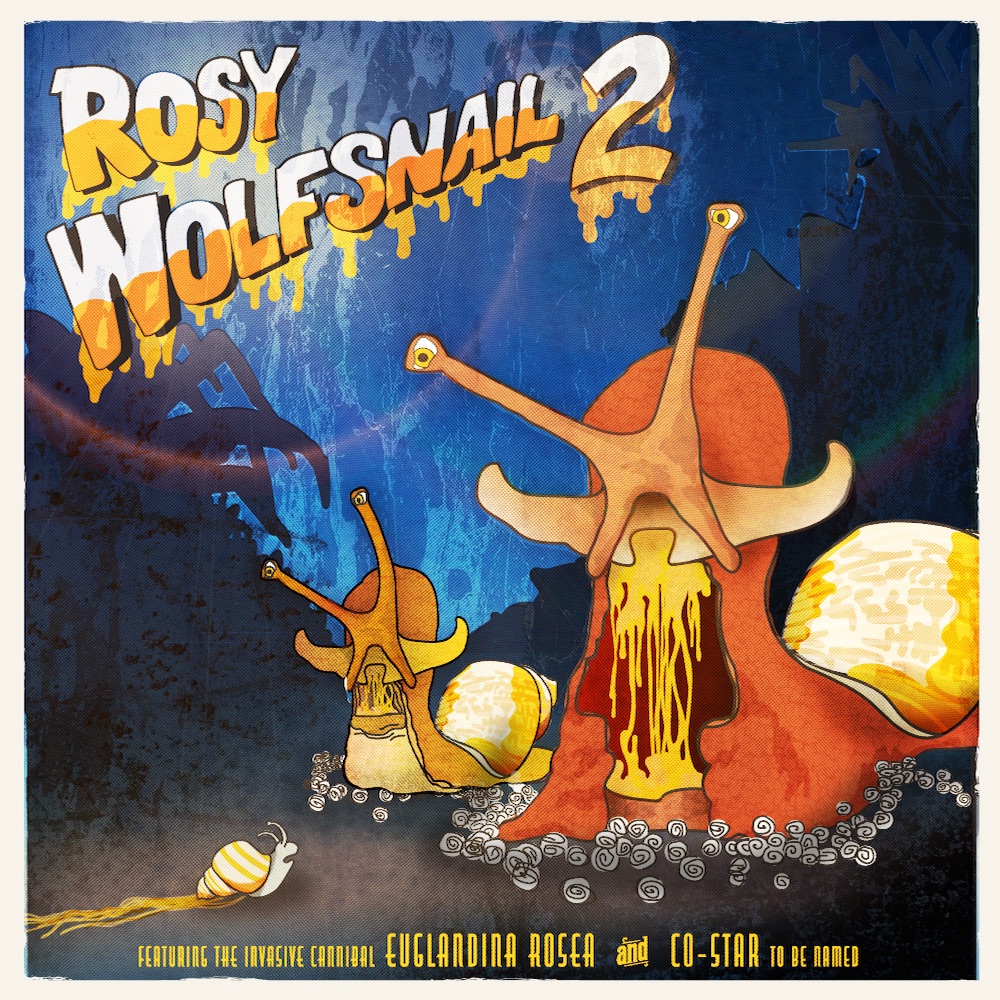
Our weirdest stories of 2017
December 20, 2017
Alisson Clark
Fossil pandas. Twisted fairy tales. Cannibal snails. You might say 2017 was a good year for weird news. Here are the oddest stories UF News covered this year.
Meet the world's deadliest duo
A killer snail devours its own kind by tracking their slime trails with its handlebar moustache-shaped sensors. As if that's not bad enough, University of Florida malacologist John Slapcinsky and colleagues found there’s actually two lethal gastropod species on the loose. Read more.
What strange versions you have, Grandmother
Among the 400 versions of "Little Red Riding Hood" at UF's Baldwin Library of Historical Children's Literature, a visiting researcher finds some deeply weird variations on the tale. Warning: You may never look at Little Red the same again. Read more.
Searching for red pandas in an elephant graveyard

Elephant-like tusks. A toe bone of an ancient condor. A snapping turtle with a smaller turtle coming out of its nose. That's not our science writer's Christmas list, but some of the discoveries from the Florida Museum of Natural History’s new dig site, where scientists are looking for red pandas in Florida. Read more.
Echo-relocation
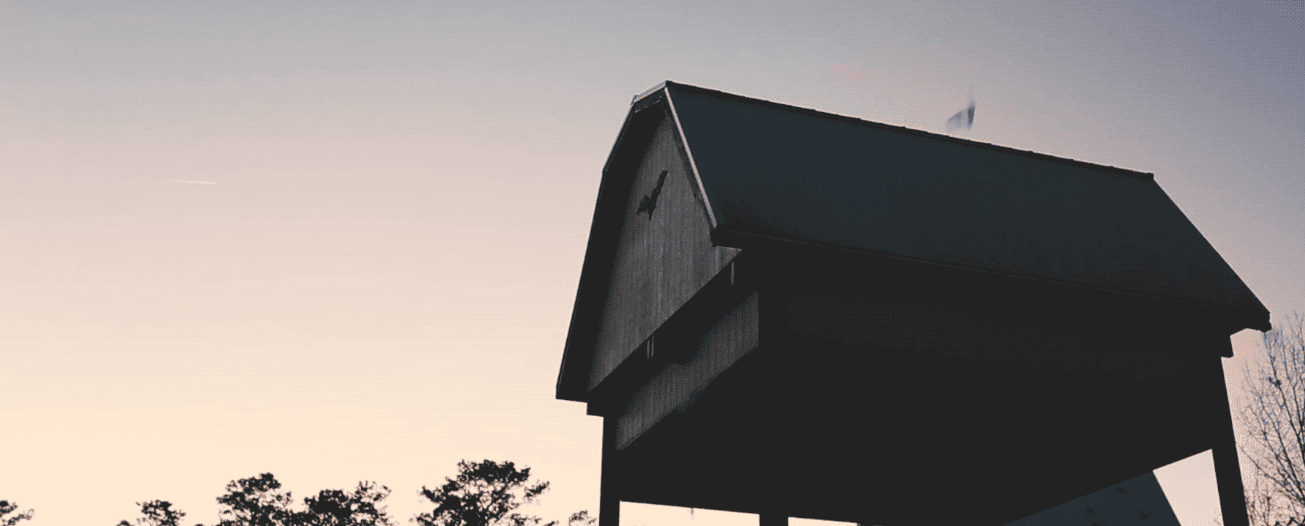
You can build your bats a bat barn, but getting them to use it is another story. Inside the struggle and success of one of campus' top landmarks. Read more.
Mother of Bed Bugs

This Ph.D. student spends her days with some of nature's most horrifying creatures. Here's why you should thank her. Read more.
Society & CultureUF ranks No. 2 on Kiplinger Best College Values list for 2018
December 22, 2017
Steve Orlando
The University of Florida ranks No. 2 in the nation among public universities and No. 1 in Florida on the Kiplinger’s Personal Finance magazine list of Best College Values for 2018.
UF has been among Kiplinger’s top-10 best values in public colleges since 2005. Among both public and private institutions, UF ranked No. 32 and was the only Florida university, public or private, to make the top 50.
“This is good news for our students and their families,” UF President Kent Fuchs said. “They can be assured that the University of Florida provides an outstanding education with an affordable cost.”
Kiplinger lists UF’s total annual cost of attendance for in-state students at $17,501, the lowest among the top 10 institutions.
The top-10 public schools are:
1. University of North Carolina at Chapel Hill
2. University of Florida
3. University of Virginia
4. University of Michigan
5. University of California, Berkeley
6. University of California, Los Angeles
7. University of Washington
8. University of Texas at Austin
9. North Carolina State University
10. University of Maryland, College Park
Introduced in 1998, the rankings now combine public schools, private universities and private liberal arts colleges into a single, comprehensive list. Kiplinger also ranks the 100 best values in each category. The analysis is based on objective measurements of academic quality and affordability, not subjective criteria.
“Our rankings, which weigh affordability alongside academic quality, are a great resource for students and their parents when sorting through college choices,” said Mark Solheim, editor of Kiplinger’s Personal Finance magazine. “We start with a universe of nearly 1,200 schools and trim the list using measures of academic quality. We then rank the schools based on cost and financial aid data. All 300 schools on our list are worth a look.”
The editors at Kiplinger’s Personal Finance start with data from nearly 1,200 public and private four-year schools, provided by Peterson’s. The list is then narrowed to the top schools based on measures of academic quality, including SAT or ACT scores, admission and retention rates, student-faculty ratios, and four-year graduation rates. The editors then rank the schools using cost and financial aid measures. Academic quality carries more weight than costs.
The full rankings are now available online at kiplinger.com/links/colleges and will appear in print in the February 2018 issue of Kiplinger's Personal Finance, on newsstands Jan. 9.
For additional information or to schedule an interview, contact Kailey McGarvey at Kiplinger, 646-695-7046 or Kailey@rosengrouppr.com
Campus Life.jpg)
17 inspiring people we met in 2017
December 21, 2017
UF News
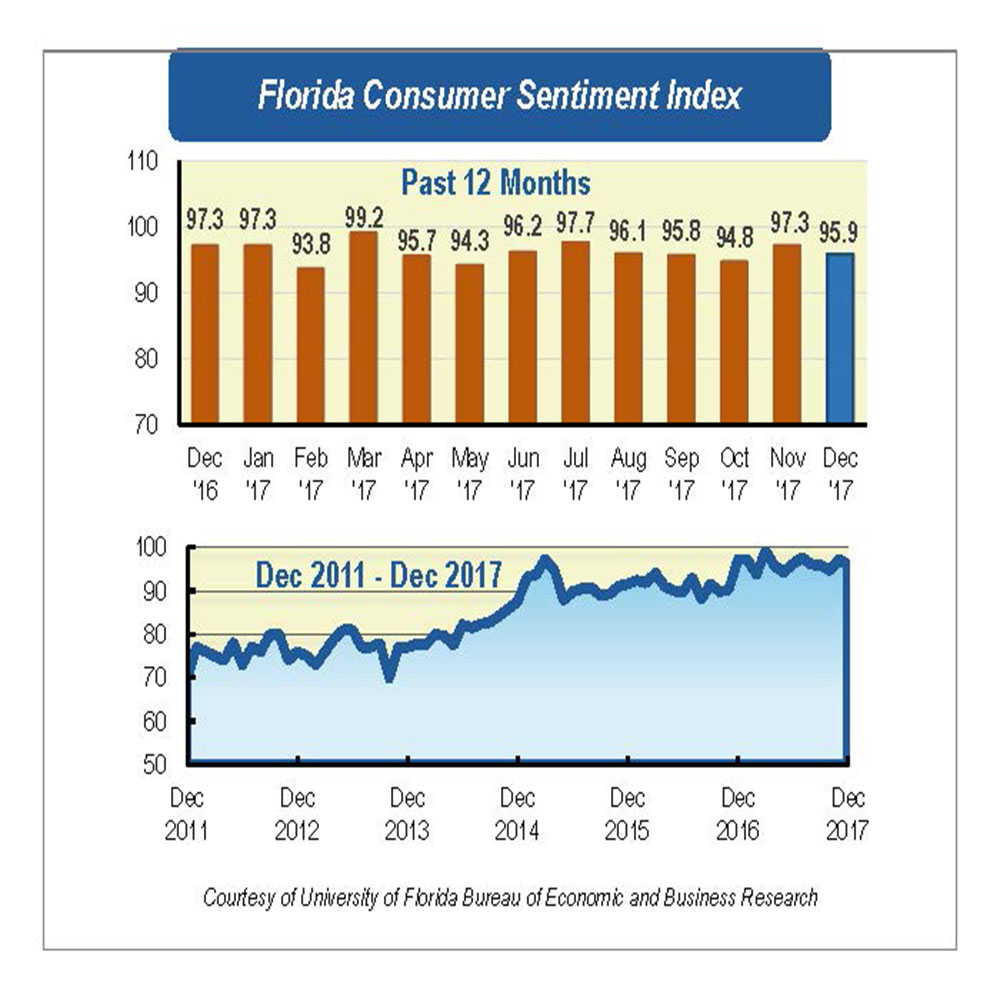
Florida consumer sentiment broke records in 2017, despite a downturn in December
December 22, 2017
Kelly Muzyczka
Consumer sentiment in December fell both nationally and among Floridians, dropping 1.4 points in Florida from a revised November figure of 97.3 to 95.9, according to the latest University of Florida consumer survey.
Among the five components that make up the index, one increased and four decreased.
Opinions as to whether now is a good time to buy a big-ticket household item rose 3.5 points, from 101.1 to 104.6. Perceptions of one’s personal financial situation now compared with a year ago dropped 1.3 points from 90 to 88.7.
“This drop was not found among men, those aged 60 and older, or those with an income under $50,000. It’s worth noting that the biggest drop regarding current personal finances was among respondents with an income of $50,000 or greatersaid Hector H. Sandoval, director of the Economic Analysis Program at UF’s Bureau of Economic and Business Research.
The three components representing expectations of future economic conditions all declined this month. Expectations of personal finances a year from now declined 2.9 points from 105.4 to 102.5. Anticipated U.S. economic conditions over the upcoming year decreased 2.5 points, from 96.9 to 94.4. Expectations of U.S. economic conditions over the next five years showed the biggest drop this month, down 3.6 points from 93 to 89.4.
“Most of the pessimism this month comes from unfavorable expectations about the state of the U.S. economy over the next five years. Remarkably, these negative perceptions are shared across all demographics in Florida and are strongest among those with an income level over $50,000. Additionally, the pessimism may reflect concerns over daily financial debates by the U.S. government this month,” Sandoval said.
Florida began 2017 with a three-month, record-breaking increase in consumer sentiment. March 2017 reported the highest consumer sentiment level since March 2002, contributing to an average of 96.1 in the first half of the year. Consumer sentiment readings generally fell every month after August though the average consumer sentiment for the second half of 2017 was 96.3 points, two-tenths of a point higher than the first half. “Notably, the average consumer sentiment in 2017 is 4.6 points higher than last year’s average, and it’s the highest average since 2000. Overall, Floridians are far more optimistic in 2017,” Sandoval said.
Economic indicators in Florida have remained favorable throughout 2017. The labor market experienced solid job gains and a decreasing unemployment rate. The latest figure available shows the monthly unemployment rate in Florida dropped two-tenths of a percentage point to 3.6 percent in October.
The Federal Reserve’s recent decision to raise interest rates by a quarter of a percentage point reflects their confidence that nationwide economic activity will continue expanding at a moderate rate and that the labor market will remain strong.
“As the year ends with an overall high level of consumer sentiment and a positive economic outlook among Floridians, there are good financial prospects for 2018. We expect consumer sentiment in January to remain around the average 2017 levels,” Sandoval said.
Conducted Dec. 1-18, the UF study reflects the responses of 427 individuals who were reached on cellphones, representing a demographic cross section of Florida.
The index used by UF researchers is benchmarked to 1966, which means a value of 100 represents the same level of confidence for that year. The lowest index possible is a 2, the highest is 150.
Details of this month’s survey can be found at http://www.bebr.ufl.edu/csi-data
Society & Culture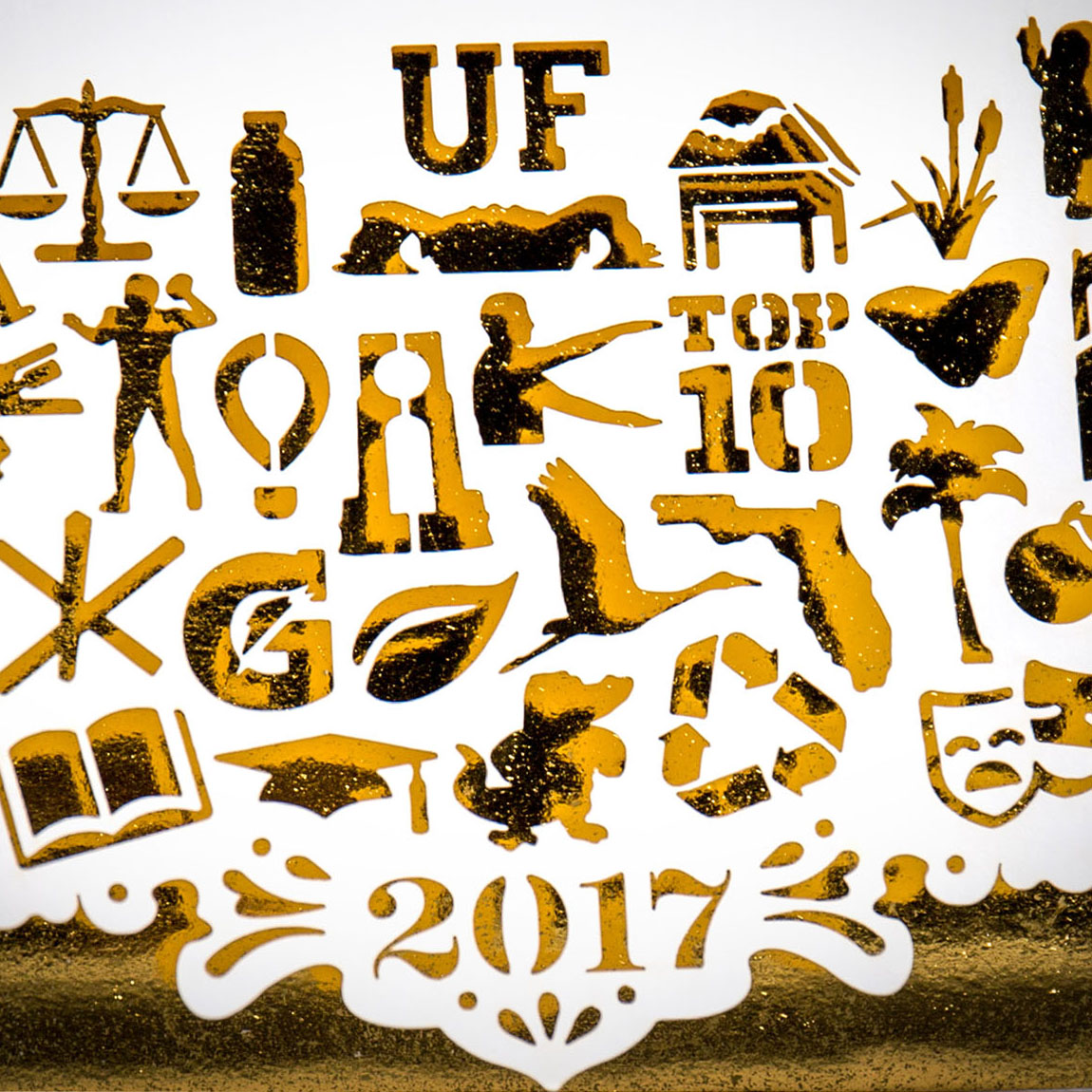
Students’ design helps spread holiday, school spirit
December 23, 2017
Margot Winick
To showcase the passion, positivity and creativity of the campus community, for the second year in a row, President and Mrs. Fuchs reached out to students to design an original piece of art for their official holiday card.
President Fuchs contacted the UF School of Art + Art History about the project, and assistant professor Jarred Elrod, who teaches a course in typography, assigned five teams of students to compete for the honor.
The class project was a real-world opportunity for students to work with a client. They had three weeks to create their designs, based on an outline and some requirements, including making the card non-denominational.
The card chosen by the Fuchses was designed by students Mary Grace Burkett, Ian Childers, Kendal Jones, Laura Suescun and Allison Vizzi. It features white paper overlay and gold metallic ink with 32 cut out icons representing UF, from Century Tower and the bat houses to a stethoscope and a butterfly from the Florida Museum of Natural History. Albert and Alberta make a cameo appearance, naturally. The project involved two techniques, laser cutting and metallic ink printing for the printed version, which were produced in part at the UF Infinity Fab Lab. To help cover costs, the Fuchses made a donation to the School of Art + Art History.
The message inside reads “Warmest Wishes… May you find peace, prosperity and happiness in 2018,” and was sent to legislators, Board of Trustee members, Board of Governors, family and friends. An electronic version was emailed to faculty, staff, students and alumni in early December.
Campus Life
Our most-read stories of 2017
December 22, 2017
UF News
Here’s what UF News readers clicked most this year.
1) Extinct tortoise yields oldest tropical DNA
An unlucky tortoise that fell into a sinkhole 1,000 years ago captured the imagination of Reddit, which led tens of thousands of readers to the story to discover what scientists could learn from the tortoise's DNA. Full story
2) Being rude to your child’s doctor could lead to worse care
Don’t snap at your child’s doctor: It could have harmful or even deadly consequences, according to research by management professor Amir Erez and doctoral student Trevor Foulk. Full story
3) UF first in Florida to crack U.S. News list of top 10 best public universities
Being a Florida Gator got even greater in September, when U.S. News & World Report named UF a top 10 public university, coming in at No. 9. Full story4) UF applications hit a record high
More than 34,000 prospective students applied for admission to UF during the summer and fall semesters of 2017, a nearly 8 percent increase over the 2016 total. UF admitted 13,214 for a 38 percent acceptance rate. Full story
5) Becoming visible, Part 1
The first installment in our series on up-and-coming female scientists at the Florida Museum of Natural History featured Michelle Barboza, a paleontology graduate student whose podcast covers the history of women in science and issues surrounding gender inequality in STEM. Full story
6) Eight UF programs ranked top 10 in the world, according to new rankings
The Center for World University Rankings named UF's entomology department the world’s best, with programs from agriculture to zoology also making the world’s Top 10. Full story
7) Why you can’t think of that word on the tip of your tongue – and how to fix it
It happens to everyone at some point — you know the word, you just can’t think of it. Maybe that’s why readers clicked on this story with tips from psychology professor Lise Abrams. Full story
8) WILD life
Crossing the country in a retired ambulance, the recent UF grads behind a new Nat Geo WILD series are hoping to get viewers hooked on nature. Full story
9) Space plants
These UF scientists are on a mission to feed Mars. Here’s how and why they send plants into space. Full story
10) Sunken treasures
UF News dove deep to reveal how Florida Sea Grant boosts the economy and environment by lending expertise to artificial reefs. Full story
Campus Life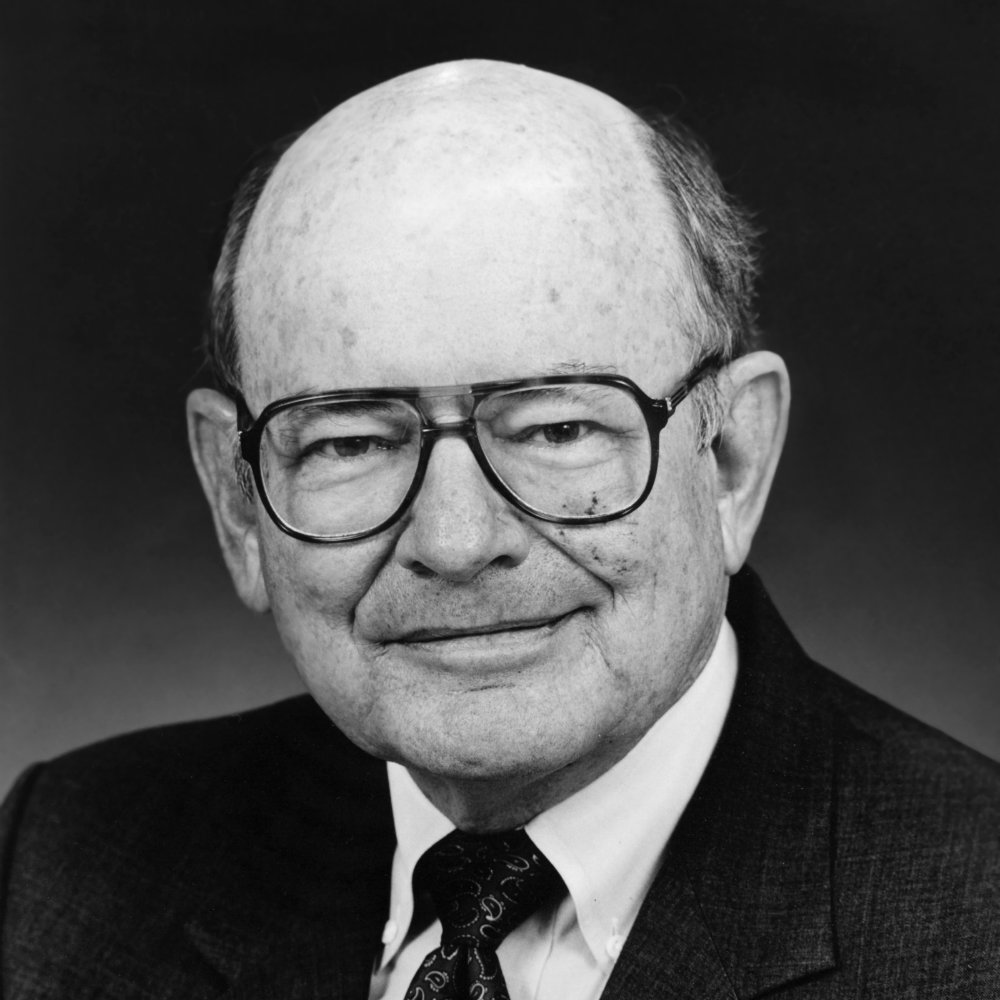
Robert Bryan, who served as interim President from 1989-90, has passed away
December 31, 2017
UF News
Robert Armistead Bryan died on December 27, 2017, in Gainesville, Florida, at the age of 91.
Bob was preceded in death by his wife of 54 years, Kathryn ('Kay') Elizabeth Williams Bryan (1921-2007).
He is survived by their two children, Lyla Kay Bryan King (Kim) and Matthew Armistead Bryan (Sheri), of Tallahassee, and four grandchildren, Molly Ann Bryan, Matthew Armistead 'Buzz' Bryan, Jr., Mary Kathryn King, and Robert Bryan King.
Bob Bryan was born in 1926 in Lebanon, Pennsylvania, the son of Morris Armistead Bryan and Susan Katharine Maulfair. From the age of two, Bob was raised by his father and stepmother, Catharine Chaffee Bryan. He was educated in the public school system in Miami, Florida. He served in World War II as a ship's officer in the U.S. Merchant Marine. After the war, he was graduated from the University of Miami with a B.A. in English. He completed a Ph.D. in English at the University of Kentucky in 1956. His specialty was the poetry of John Donne. In Lexington, Bob and Kay met on a blind date arranged by mutual friends. He proposed to her the next evening, and they were married six weeks later, on February 3, 1953. A few months later, Bob was drafted for service in the Korean War. He spent two years in Tokyo as a Special Agent in the U.S. Army's Counter Intelligence Corps. Kay was with him in Tokyo much of that time. Bob and Kay returned to Lexington, where Bob finished graduate studies, teaching at the University of Kentucky.
Bob spent nearly his entire professional career at the University of Florida, where he began in 1957 as an assistant professor of English. He was promoted to professor in 1968. Meanwhile, he began a parallel career in academic administration as a part-time assistant dean of the Graduate School in 1962. He spent a year, 1969-70, as Florida Atlantic University's first graduate dean and director of the Division of Sponsored Research. Turning to full-time administration in 1970 at the University of Florida, Bob was, successively, Dean of the Faculties, Associate Vice President for Academic Affairs, Vice President of Academic Affairs, and Provost, from 1970 to 1989. He served under Presidents Reitz, O'Connell, York, Marston, and Criser. He was particularly proud of the University's admission to membership in the Association of American Universities in 1985. Bob ended his professional career at the University of Florida in 1990, having served for one year as Interim President. While Interim President, he led the University to hire Steve Spurrier as head football coach. In 1991-92, he left retirement to serve as Interim President of the University of Central Florida. He left retirement again in 1993-94 to serve as interim President of the University of South Florida.
Bob was an avid fisherman and sports fan who cultivated close relationships with faculty, students, family, and friends. His leadership, sense of humor, quick wit, and passion for higher education, will remain with us for years to come.
A memorial service will be held on Thursday, January 11, 2018, at 1:00 p.m. at Holy Trinity Episcopal Church in Gainesville, Florida. In lieu of flowers, memorials may be made to: The University of Florida Foundation-Gift Processing, P.O. Box 14425, Gainesville, FL 32604, for the Robert A. Bryan Merit Scholarship Fund.
Please visit his memorial page at www.williamsthomasfuneralhome.com.
Campus Life




